Home » Kitchen Improvement (Page 2)
Category Archives: Kitchen Improvement
Anticipation Builds for In-Person KBIS 2022
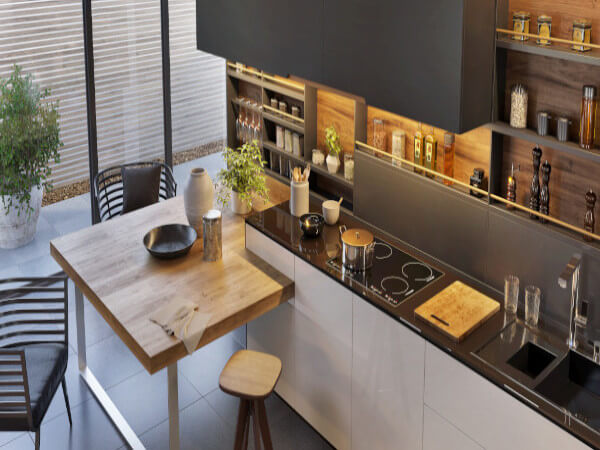
HACKETTSTOWN, NJ – As the year comes to a close, many in the kitchen and bath industry are looking ahead to the return of the Kitchen & Bath Industry, the largest North American event dedicated to this segment of the market. With safety protocols and procedures in place, professionals are celebrating a return to an in-person exhibit and educational forum, where they can learn, reconnect and recharge for a promising business future.
Once again scheduled to be part of Design & Construction Week with the International Builders Show, the Kitchen & Bath Industry Show is scheduled to be held February 8-10, 2022 at the Orange County Convention Center in Orlando, FL. KBIS and IBS, hosted by the National Kitchen & Bath Association and the National Association of Home Builders, respectively, are expected to feature over 800,000 net square feet of exhibit space and showcase more than 1,000 design and construction brands.
While the event is still several weeks away, Kitchen & Bath Design News is offering this sneak peek at just a few of the products that will be on display.
The post Anticipation Builds for In-Person KBIS 2022 appeared first on Kitchen & Bath Design News.
Did you miss our previous article…
https://www.thekawaiikitchen.com/?p=682
Battling the Supply Chain Woes
Qianyan Cheng has felt the sting of the industry’s historic supply chain disruptions.
The co-founder of INOX – the Sacramento-based supplier of decorative hardware and door locks – Cheng has reported lengthy shipment delays of international goods since the onset of COVID-19. Shipping costs, Cheng tells Kitchen & Bath Design News, have risen exponentially in the face of the public-health crisis. The growing backlog of cargo ships waiting to offload in key ports, she says, has increased more than fourfold in some cases, impacting distribution throughout the company’s worldwide network of upscale hardware showrooms. Related bottlenecks have delayed remodeling and new-construction projects for months – or postponed them entirely.
And Cheng, of course, is far from alone.
Indeed, supply chain disruptions wrought largely by the coronavirus continue to prove a major impediment across virtually all segments of the kitchen and bath industry, including dealers, design firms, manufacturers, importers and building/remodeling construction firms.
In some instances, the supply chain timeline has doubled or tripled due to increased demand coupled with port closures, worker shortages and travel restrictions, as well as vaccine and testing mandates for seafarers, truck drivers and other transport workers. Design firms are witnessing increasing lead times, raw material scarcities and double-digit price hikes for certain products. Labor rates have skyrocketed in the face of worker shortages. Cancellations and postponements have increased, with clients opting to put projects on hold until wait times and costs normalize. At the same time, a sizable number of manufacturers report ongoing capacity restraints, a scarcity of raw materials and the discontinuation of slow-moving product lines to alleviate production constraints.
Equally vexing is the likelihood that the current disruptions will linger well into 2022, and perhaps beyond, despite growing appeals for corrective action.
To wit, the Association of Home Appliance Manufacturers, the organization representing many of the industry’s leading appliance suppliers, last month lent its support to a coalition of trade associations urging government policymakers to address ongoing challenges that business leaders say are damaging the competitiveness of manufacturers, stalling America’s economic recovery and resulting in unprecedented damage to the global product supply chain. AHAM’s call for action, following a similar appeal by the National Association of Home Builders, came one day after a coalition of workers from across the supply chain warned that global trade is facing a potential system collapse if world leaders fail to restore freedom of movement to transport workers.
While some supply chain challenges – such as import tariffs – require long-term, systemic solutions, others can be mitigated by kitchen and bath dealers, designers and remodelers who are willing to temporarily alter their business approach.
For example, many design firms report that they’ve become adaptive to current supply chain challenges, ordering products months in advance to circumvent long lead times and lessen the sting of price hikes. Others say they’ve ordered materials as soon as project contracts are signed, even if a job is weeks out, or have stocked up on commonly used products in an effort to reduce delays. Still others are offering clients alternative products that are easier to obtain or already in stock. Frequent and candid communication regarding extended lead times, back orders and volatility in delivery dates has also become more critical than ever in managing client expectations and preserving relationships, dealers and designers say.
The kitchen and bath design trade has faced a multitude of challenges over the course of its existence. The advent of big box stores and e-commerce has altered the industry’s competitive set. Corporate bankruptcies, ownership changes, factory closures and divestitures have reshaped the manufacturing and retail landscape. Fast-changing lifestyles, homeowner demographics, product introductions and consumer hot buttons have exacerbated the need to stay abreast of what’s going on. Economic downturns have occasionally knocked the industry on its heels.
Astute dealers and designers, for decades, have proven resilient to these and other changes. They’ll doubtless discover ways to survive the current supply chain disruptions, as well. 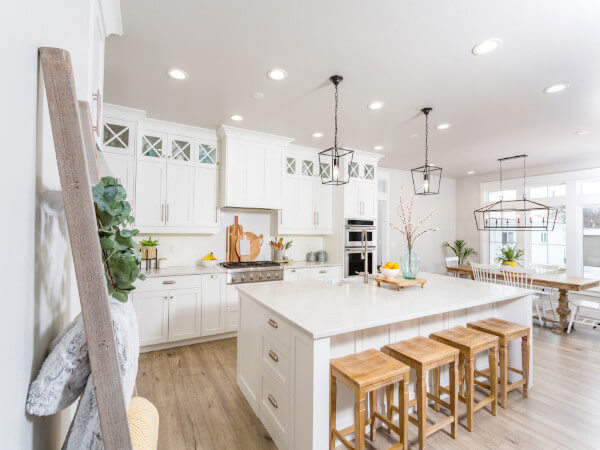
The post Battling the Supply Chain Woes appeared first on Kitchen & Bath Design News.
Did you miss our previous article…
https://www.thekawaiikitchen.com/?p=679
Elegant Essentials
Beautiful finishes, exquisite detailing and exceptional functionality are all integral to the design of luxury products. The high standards for these products are not only constantly met but exceeded by the companies that produce them.
Choosing the best products introduced into the luxury market is no easy task, but the Decorative Plumbing & Hardware Association assigned a team of industry experts to do just that for its 2021 Product of the Year Awards. The program recognizes uniqueness, design, functionality, innovation and technological superiority and taps the winners in a range of categories. This year’s independent panel of judges included: Mary Jo Peterson, principal, Mary Jo Peterson Design in Brookfield, CT; Eliot Sefrin, founding director and publisher emeritus of Kitchen & Bath Design News; Alissa Ponchione, executive editor at Hospitality Design magazine; Molly Switzer, creator, Molly N. Switzer Designs in Portland, OR, and Alena Capra, owner, Alena Capra Designs in Fort Lauderdale, FL.
Award winners were presented in seven separate categories: Plumbing Fixture, Water Delivery, Furniture, Accessory, Door Hardware, Cabinet Hardware and Technology. The Products of the Year were announced at DPHA’s annual conference and product showcase held this past fall. 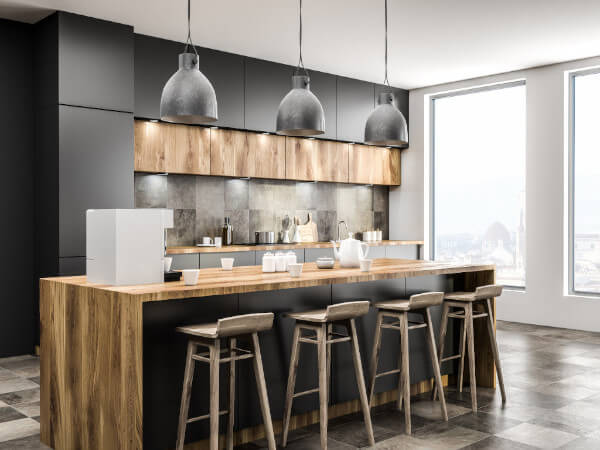
Water Delivery
Winner
Brizo: Frank Lloyd Wright Single-Function Raincan Showerhead
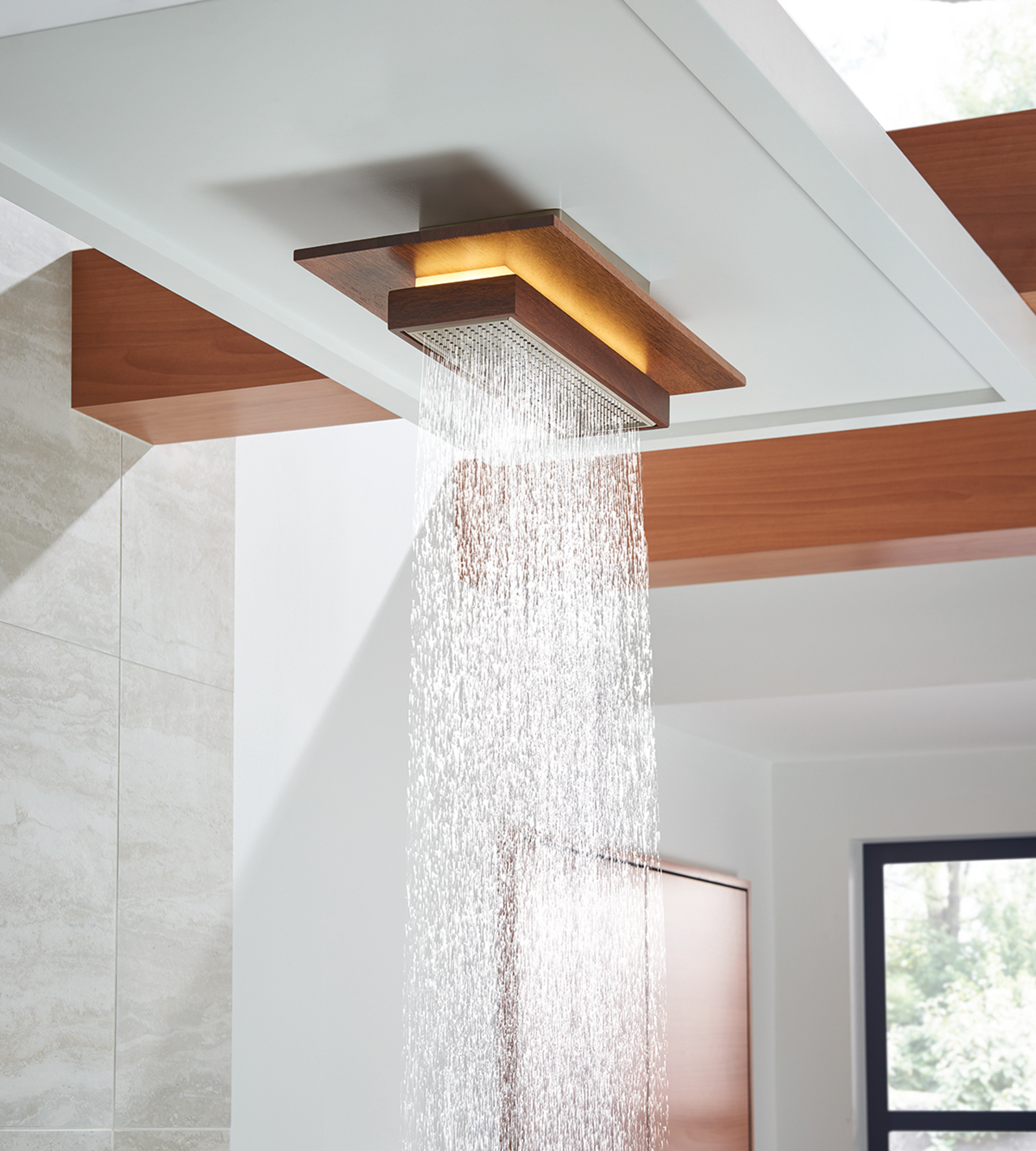 Drawing on the famed architect’s philosophy of organic architecture, Brizo’s Frank Lloyd Wright Single-Function Raincan Showerhead features the distinctive rush of the Canopy Spray, which activates a built-in LED light powered by a hydroge- nator for a dramatic effect. The Spray releases thousands of fine droplets, creating a down- pour that leaves a light tingling sensation. The showerhead can also be surface mounted to the ceiling or pendant mounted on a shower arm. A number of metal finish options highlight the natural beauty of the available wood.
Drawing on the famed architect’s philosophy of organic architecture, Brizo’s Frank Lloyd Wright Single-Function Raincan Showerhead features the distinctive rush of the Canopy Spray, which activates a built-in LED light powered by a hydroge- nator for a dramatic effect. The Spray releases thousands of fine droplets, creating a down- pour that leaves a light tingling sensation. The showerhead can also be surface mounted to the ceiling or pendant mounted on a shower arm. A number of metal finish options highlight the natural beauty of the available wood.
Honorable Mention
California Faucet: Corsano Culinary with Squeeze Handle
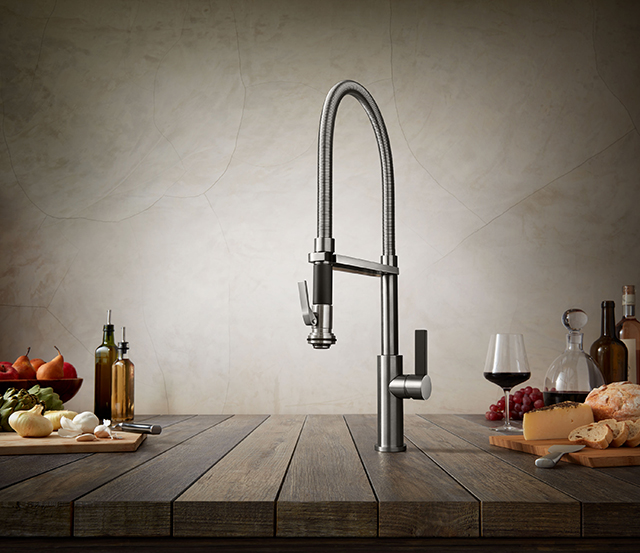 Designed to give cooking enthusiasts a professional look, the Corsano Culinary Faucet with Squeeze Handle includes an easy-to-squeeze lever that activates a powerful spray. Available from California Faucets, the kitchen faucet is offered in 25-plus artisan finishes, plus the ability to finish the coiled spring to match the rest of the faucet. The uniquely engineered insulated sprayhead ensures that it’s never too hot to the touch, even with scalding water. Easy-to-clean spray jets withstand mineral build-up, notes the firm.
Designed to give cooking enthusiasts a professional look, the Corsano Culinary Faucet with Squeeze Handle includes an easy-to-squeeze lever that activates a powerful spray. Available from California Faucets, the kitchen faucet is offered in 25-plus artisan finishes, plus the ability to finish the coiled spring to match the rest of the faucet. The uniquely engineered insulated sprayhead ensures that it’s never too hot to the touch, even with scalding water. Easy-to-clean spray jets withstand mineral build-up, notes the firm.
Accessory
Winner
Sterlingham: Marble Heated Towel Rail
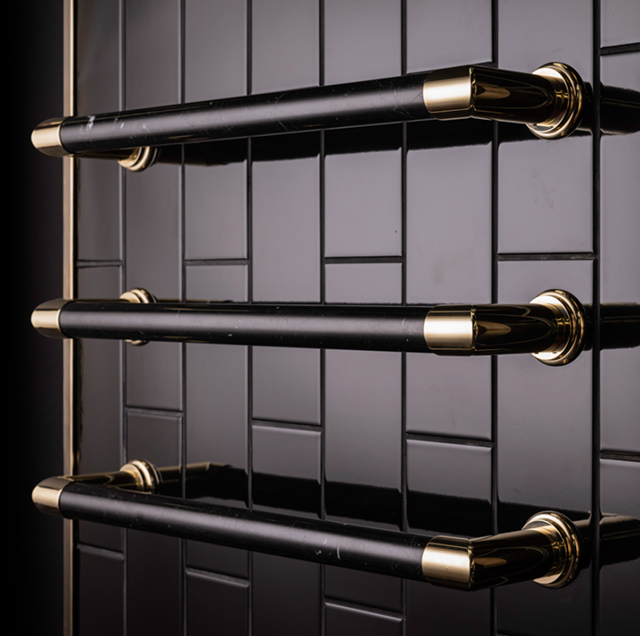 The Sterlingham Co.’s Marble Heated Towel Rail pairs marble with the brand’s signature brassware in a rail designed to gently warm towels. Part of the Cascades Collection, the single rails – which measure nearly 24″ long – may be hung alone or stacked and arranged in nearly any formation. The marble accents are patterned and versatile, and available in five distinctive marbles: Nero Marquina, Bardiglio Nuvolato, Bianco Carrara Venatino, Calacatta Gold Calo-Bett and Giallo Sienna, along with 16 metal finishes.
The Sterlingham Co.’s Marble Heated Towel Rail pairs marble with the brand’s signature brassware in a rail designed to gently warm towels. Part of the Cascades Collection, the single rails – which measure nearly 24″ long – may be hung alone or stacked and arranged in nearly any formation. The marble accents are patterned and versatile, and available in five distinctive marbles: Nero Marquina, Bardiglio Nuvolato, Bianco Carrara Venatino, Calacatta Gold Calo-Bett and Giallo Sienna, along with 16 metal finishes.
Honorable Mention
Infinity Drain: Next Day Custom Linear Program
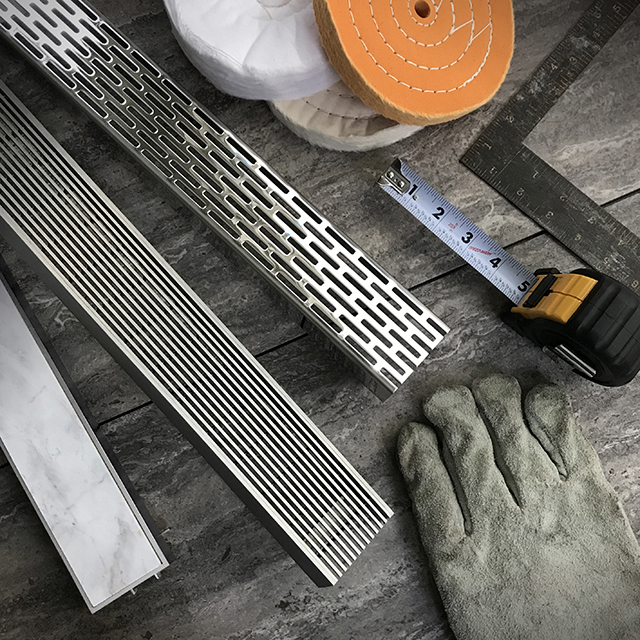 Infinity Drain’s Next Day Custom program eliminates costly and lengthy installation delays by offering custom-sized drains for the shower within a day. Next Day Custom Linear Drains are available in lengths up to 72″ and are offered in two finishes, three grate styles and for all installation waterproofing methods. Custom orders received by 10 a.m. ET ship the following day.
Infinity Drain’s Next Day Custom program eliminates costly and lengthy installation delays by offering custom-sized drains for the shower within a day. Next Day Custom Linear Drains are available in lengths up to 72″ and are offered in two finishes, three grate styles and for all installation waterproofing methods. Custom orders received by 10 a.m. ET ship the following day.
Plumbing Fixture
Winner
MTI Bath: Bowie Freestanding Tub
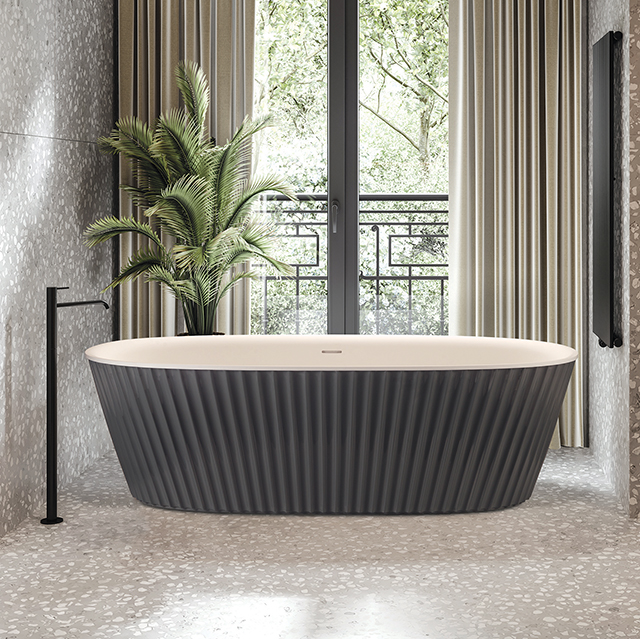
Featuring pleated exterior detailing, MTI Bath’s Bowie Freestanding Tub adds unexpected texture to the bath. Developed in collaboration with the design firm Source, Bowie is handcrafted from MTI’s SculptureStone material, which is primarily an organic mixture of ground natural minerals and resins that presents the look and feel of molded stone. Bowie provides space for two bathers, is offered as a soaker or air bath and is available in white or biscuit with eight different exterior colors in matte or highly polished gloss finishes.
Honorable Mention
Native Trails: Amara Fireclay Sinks
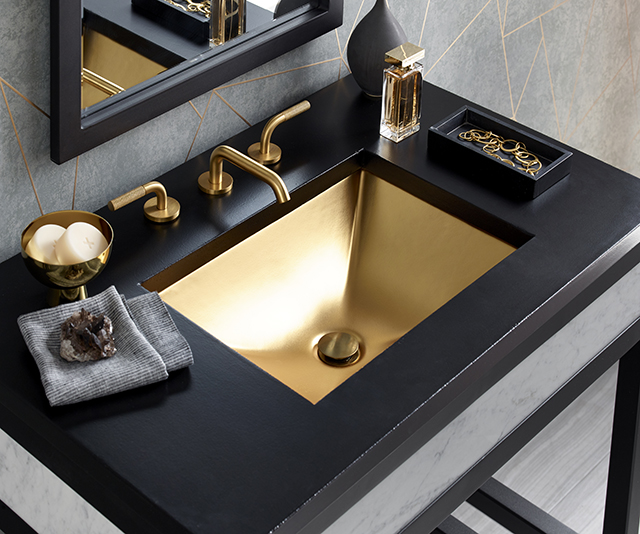 Handcrafted by Italian artisans, Amara fireclay sinks from Native Trails feature a rectangular profile glazed in 24k gold, platinum and silver in honor of the company’s silver anniversary. The sink is created from rich clay soils sourced from the Umbrian region of central Italy that are molded using ancient ceramic techniques dating back to the Bronze age. The sinks can be installed as drop-in or undermount, and deliver a stain-resistant, non-toxic coating that resists tarnishing and fingerprints.
Handcrafted by Italian artisans, Amara fireclay sinks from Native Trails feature a rectangular profile glazed in 24k gold, platinum and silver in honor of the company’s silver anniversary. The sink is created from rich clay soils sourced from the Umbrian region of central Italy that are molded using ancient ceramic techniques dating back to the Bronze age. The sinks can be installed as drop-in or undermount, and deliver a stain-resistant, non-toxic coating that resists tarnishing and fingerprints.
Furniture
Winner
Stone Forest: Elemental Crossbar
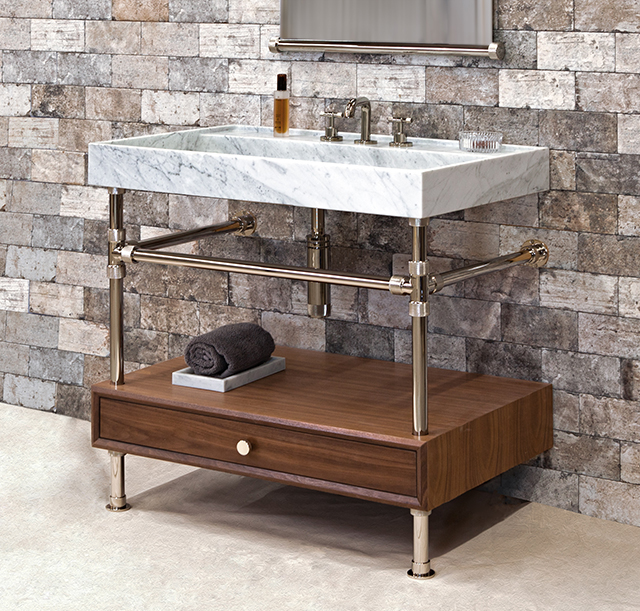 Designed for the bath, Stone Forest’s Elemental Crossbar uses a locking collar system that affords the flexibility to customize each setup to suit individual needs and preferences. The knurled locking collar supports modular components at desired heights on the brass pipe legs for seemingly endless options. Elemental Crossbar allows users to combine integral stone sinks, wood drawers and steel, wood or stone shelving in various combinations. It is available in all finishes, including a new walnut finish option for drawers and shelves.
Designed for the bath, Stone Forest’s Elemental Crossbar uses a locking collar system that affords the flexibility to customize each setup to suit individual needs and preferences. The knurled locking collar supports modular components at desired heights on the brass pipe legs for seemingly endless options. Elemental Crossbar allows users to combine integral stone sinks, wood drawers and steel, wood or stone shelving in various combinations. It is available in all finishes, including a new walnut finish option for drawers and shelves.
Honorable Mention
AD Waters/Simas: Agile Vanity
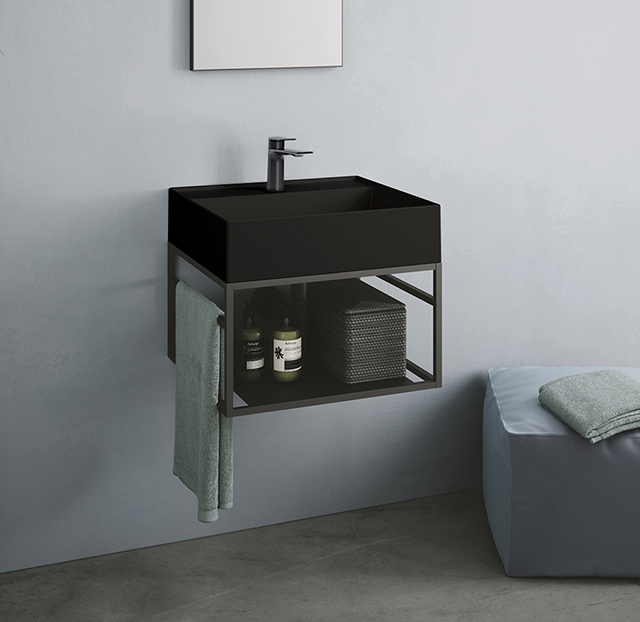 Handcrafted in Italy, the Agile wall-hung console vanity from Simas exhibits clean lines and squared-off edges that evoke both simplicity and purity. Available in the U.S. from AD Waters, the piece includes a washbasin fashioned from Italian porcelain, showcasing craftsmanship and cultural authenticity. Agile is available in eight colors.
Handcrafted in Italy, the Agile wall-hung console vanity from Simas exhibits clean lines and squared-off edges that evoke both simplicity and purity. Available in the U.S. from AD Waters, the piece includes a washbasin fashioned from Italian porcelain, showcasing craftsmanship and cultural authenticity. Agile is available in eight colors.
Door Hardware
Winner
Accurate Lock & Hardware: SmartEntry, Self-Latching Mortise Lock
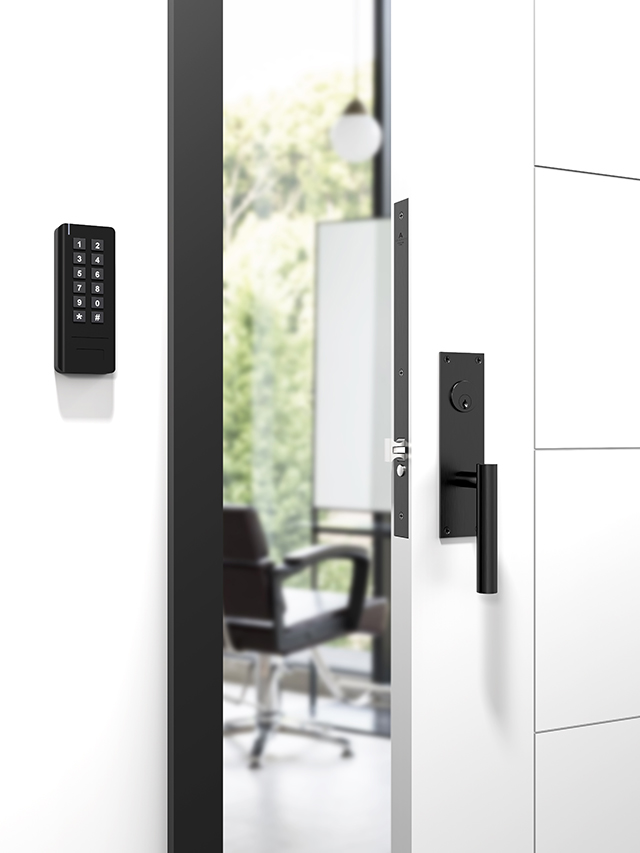 The SL-SM9159E brings the convenience of smartphone locking control to space-saving sliding and pocket doors. The lock, from Accurate Lock & Hardware, combines mechanical expertise with cutting-edge technology. Paired with the SL9100 Self-Latching Mortise Lock, it is available with a variety of trim options including Sectional Trim (lever and rose), ADA Trim (lever and escutcheon) or Flush Pull Trim for Pocket Doors.
The SL-SM9159E brings the convenience of smartphone locking control to space-saving sliding and pocket doors. The lock, from Accurate Lock & Hardware, combines mechanical expertise with cutting-edge technology. Paired with the SL9100 Self-Latching Mortise Lock, it is available with a variety of trim options including Sectional Trim (lever and rose), ADA Trim (lever and escutcheon) or Flush Pull Trim for Pocket Doors.
Honorable Mention
OMNIA Industries: L.D12943 Smart Lock
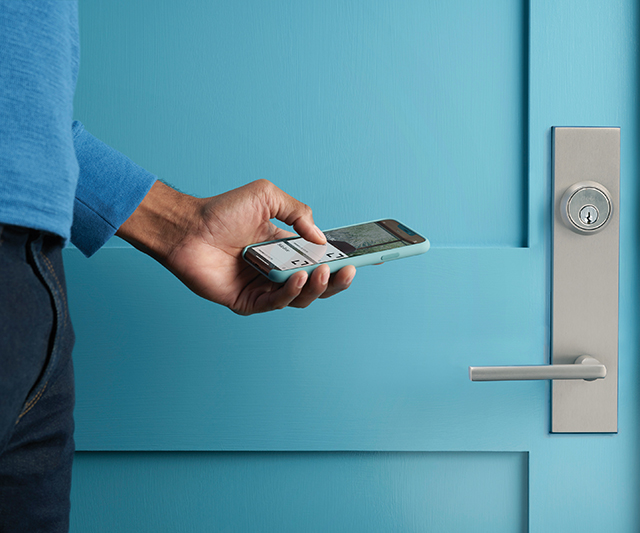 OMNIA Industries has partnered with Level to deliver smart deadbolt locksets, including the L.D12943 Smart Lock. The hardware designs are crafted in the Italian tradition and powered by the Level Bolt invisible smart lock. Level Bolt is powered by one CR2 lithium battery and works with the Level app to provide safe and secure keyless entry. Users can automatically lock and unlock a door, see who’s come and gone, access from anywhere, use with other devices, control with voice, create home automations and more.
OMNIA Industries has partnered with Level to deliver smart deadbolt locksets, including the L.D12943 Smart Lock. The hardware designs are crafted in the Italian tradition and powered by the Level Bolt invisible smart lock. Level Bolt is powered by one CR2 lithium battery and works with the Level app to provide safe and secure keyless entry. Users can automatically lock and unlock a door, see who’s come and gone, access from anywhere, use with other devices, control with voice, create home automations and more.
Technology
Winner
Airmada: Shower Drying System
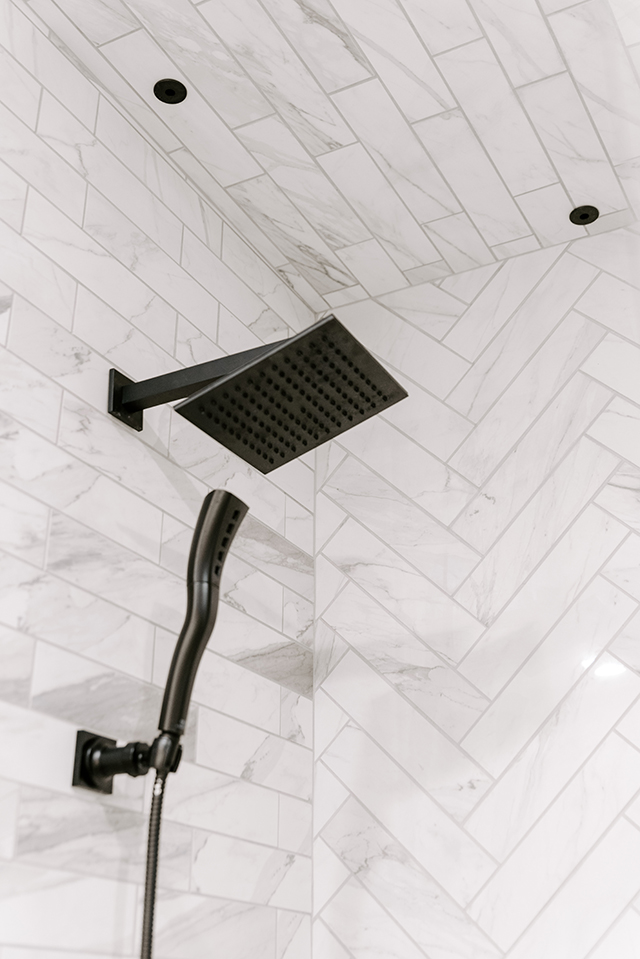 The patented Airmada Shower Drying System prevents mold, mildew, slippery floors and after-shower humidity, reduces watermarks, and the need to use harsh cleaning chemicals, notes the company. With the push of a button, air flows into the space from Air-Jet nozzles installed into the walls and ceiling. Installed at rough in, nozzles are placed throughout the shower space, typically in the ceiling, on the wall above any benches and low on walls to dry across the floor. An array of finishes to match tile, and complement other features, is offered.
The patented Airmada Shower Drying System prevents mold, mildew, slippery floors and after-shower humidity, reduces watermarks, and the need to use harsh cleaning chemicals, notes the company. With the push of a button, air flows into the space from Air-Jet nozzles installed into the walls and ceiling. Installed at rough in, nozzles are placed throughout the shower space, typically in the ceiling, on the wall above any benches and low on walls to dry across the floor. An array of finishes to match tile, and complement other features, is offered.
Honorable Mention
ThermaSol: HydroVive

ThermaSol’s HydroVive is designed to bring the multi-sensory powers of light, sound and water under the user’s control when paired with ThermaSol’s Smart Shower Valve and ThermaTouch interface. Key features include a ceiling-mounted light, sound and rainhead environment system in one module; a rainhead shower that delivers a gentle falling water sensation with 300 neoprene jets; sound settings that include volume, treble, mid-range and bass; stereo RCA input; 200 full-color spectrum luminous LED, and built-in Bluetooth.
Cabinet Hardware
Winner
Waterstone Faucets: Industrial Appliance Pulls
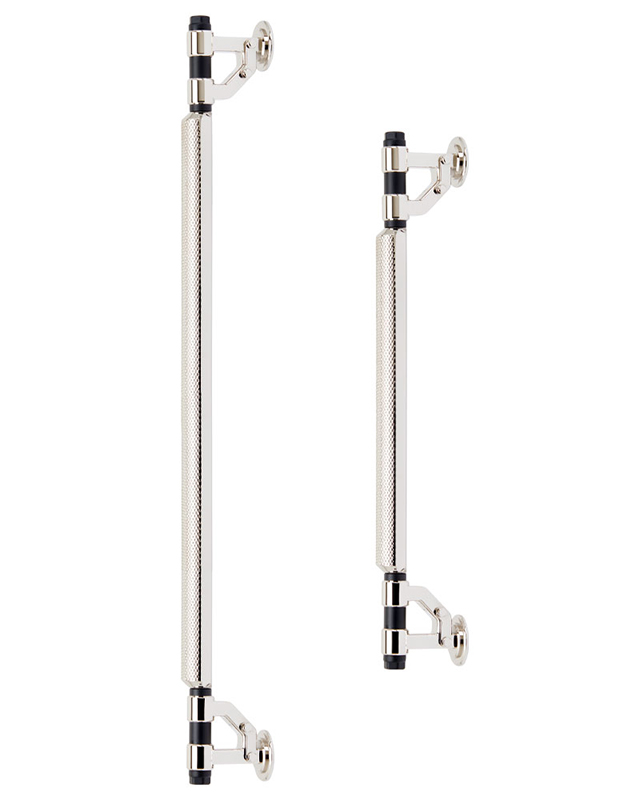 Inspired by the company’s Industrial Contemporary bath collection, the Industrial Appliance Pulls and cabinet hardware from Waterstone Faucets feature diamond knurling detailing. Fashioned from U.S. solid brass bar stock, the hardware features more of an oval shape for a comfortable feel in the hand. There is no knurling on the underside, which adds to the smooth aesthetic. Split finish designs are available.
Inspired by the company’s Industrial Contemporary bath collection, the Industrial Appliance Pulls and cabinet hardware from Waterstone Faucets feature diamond knurling detailing. Fashioned from U.S. solid brass bar stock, the hardware features more of an oval shape for a comfortable feel in the hand. There is no knurling on the underside, which adds to the smooth aesthetic. Split finish designs are available.
Honorable Mention
Turnstyle Designs: Hickory
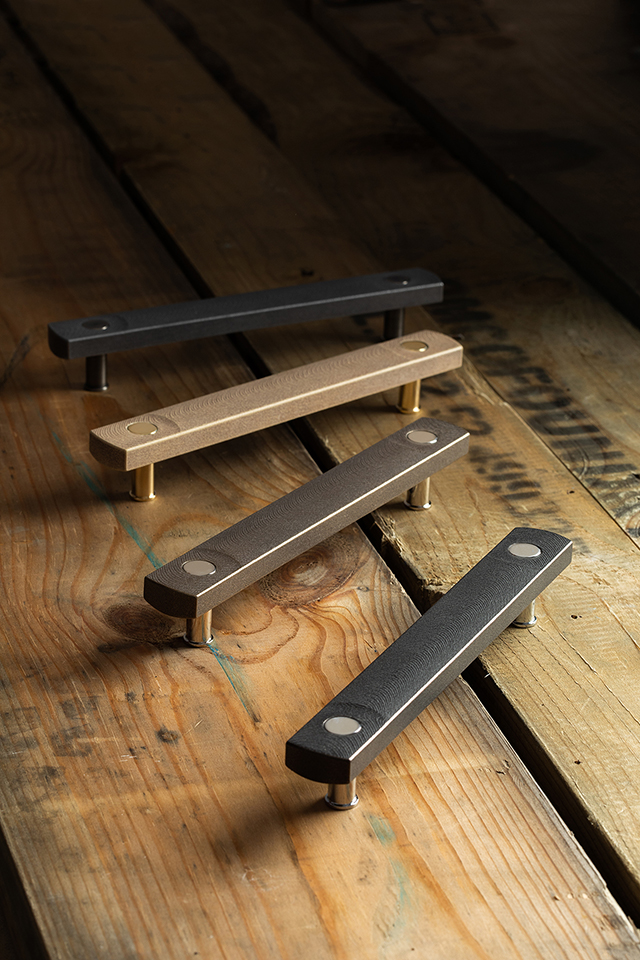 Inspired by North American hunting knives, the Hickory lever, pull handle and cabinet knob are hand-cast in Turnstyle Designs’ Amalfine material, which preserves the fine details of the timber and wood grain design. Available in 48 combinations of Amalfine and solid brass, the pieces are set on a solid brass plate or strip and have a circular button. The circular buttons are a take on a nail, creating a contrast between the smooth brass finish and the textured Amalfine surface.
Inspired by North American hunting knives, the Hickory lever, pull handle and cabinet knob are hand-cast in Turnstyle Designs’ Amalfine material, which preserves the fine details of the timber and wood grain design. Available in 48 combinations of Amalfine and solid brass, the pieces are set on a solid brass plate or strip and have a circular button. The circular buttons are a take on a nail, creating a contrast between the smooth brass finish and the textured Amalfine surface.
The post Elegant Essentials appeared first on Kitchen & Bath Design News.
Did you miss our previous article…
https://www.thekawaiikitchen.com/?p=649
Natural Warmth
The kitchen is the command center of many homes, with countertops called upon to handle more and more tasks. Food preparation is just the start; surfaces in the kitchen are also used for work, school, pet care and much more. These myriad uses require countertops that are strong and easy to care for. And, because they are so prominent in the kitchen, these surfaces must also look great and complement the other elements in the space.
“Consumers want products that are easy to maintain, durable and able to sustain a very active lifestyle,” says Massimo Ballucchi, v.p. kitchen and bath business at Cosentino North America, based in Coral Gables, FL. Customers are upgrading their countertops for aesthetic reasons as well, he says. “They want products that are making their homes a showcase…products they can admire for a long time.”
Colors and finishes for surfaces vary greatly based on individual style and taste, but there’s a clear move towards incorporating natural elements. “Designs and materials that are inspired by nature continue to lead the way in home decor trends,” stresses Gwen Petter, director of design for Temple, TX-based Wilsonart. “We’re seeing it everywhere from décor and paint colors to textiles and building materials, including countertops. Research shows that nature can offer mental health benefits including decreasing stress and relieving anxiety, as well as improve happiness and well-being.”
Material choice is often driven by convenient maintenance. “With a wave of new home buyers, we’re still seeing many homeowners unaware of the varying levels of durability and maintenance required when it comes to their countertop choices, and they’re shocked when they realize the maintenance involved with many popular options, such as marble,” offers Gerri Chmiel, residential design lead at Formica Corporation in Cincinnati, OH. “Interior designers say homeowners most often ask for the look of marble or quartz, but also want durable surfaces that are easy to clean and maintain,” she adds.
This is leading designers to recommend products that are low maintenance yet don’t compromise on modern, beautiful design. Colors that add warmth to the space – along with bolder colors, textures and materials that help make a statement – are also currently trending. That’s according to manufacturers recently surveyed by Kitchen & Bath Design News.
Natural Look Without the Wear
An organic, natural feel is desirable, but that doesn’t mean consumers are necessarily choosing natural stone. Maintenance concerns are driving the need for products that have the look of natural stone while offering higher durability. This has created a shift towards quartz, porcelain, laminate and solid surface.
“Consumers are most interested in performance, in-style yet timeless looks and materials that offer solutions,” Petter remarks. “The serene beauty of quartz is always in high demand, and it’s no surprise when you consider the material’s many benefits: on-trend elegant designs for any space, easy to clean and maintain, durable, stain resistant.”
“Solid Surface is quickly gaining traction as one of the most sought-
after countertops for its reliable durability, impact resistance and nearly effortless maintenance,” she adds.
The tendency of natural stone to stain and etch has driven the market towards porcelain, which offers the look, feel and depth of natural stone without the maintenance concerns, says Michael Zeitlin, executive director of Raphael Porcelain in Lodi, NJ. “Zero maintenance is something that every homeowner dreams of having when going for that look,” he states.
Maggie Ellis, residential marketing leader at Corian Design, based in Wilmington, DE, says they see users gravitating towards stone-like aesthetics as well as industrial looks such as cements and ironstone. “It really depends on the consumer, how they use their space and their personal style. In general, natural patterns are in demand,” she reports.
Practical Matters
Kitchen surfaces need to stand up to a wide range of activities, especially with the overlap between home, school and work these days. Durability, easy maintenance and cleanliness concerns have had a great impact on countertop trends, manufacturers say.
“Worry-free is a prerequisite to any surfacing in today’s world – whether it be flooring or countertop. That demand is here to stay,” stresses Sam Kim, senior v.p. – product at MSI in Orange, CA.
“Materials in homes need to be durable, to withstand the increased wear and tear and more frequent cleaning,” notes Ellis. Because outdoor spaces are being used more often, she adds, materials such as high-performance porcelain that can stand up to UV rays and the elements are in demand.
“We’ve seen a remarkable shift in consumer priorities to include a new focus on cleanliness and therefore countertop surfaces that can stand up to this new cleaning routine the world has taken on,” Petter states. “Materials that offer antimicrobial protection and stand up to rigorous cleaning are in high demand as we continue into this new normal.”
“Quartz, in general, has always been a durable and low-maintenance option for countertops,” adds Ed Rogers, executive v.p., US Surfaces, for Austin, TX-based Vadara Quartz Surfaces. “We are always looking for ways to improve our materials, and I believe consumers now are becoming more educated before they ever leave the house as to the type of product they want and how they need to take care of it.”
Bernadette White, v.p. at Cancos Tile + Stone in Southampton, NY says that, along with durability, the fact that porcelain comes in multiple thicknesses – allowing for a backsplash in a thinner material and thicker countertop while still book matching veining patterns – makes it a popular choice.
Warming Up
Manufacturers note that white is still the most prominent color for kitchen countertops, but warmer tones with texture and character, rather than stark, bright whites, are on the rise.
“Homeowners are looking for simple, grounding spaces that bring a sense of calm, so we’re seeing light, white spaces continue to dominate,” observes Chmiel. “People are comforted by what’s familiar, yet they’re craving something fresh and don’t want white to feel too stark, so we’re seeing an infusion of color into traditional palettes with an added hint of texture and drama.”
Ballucchi says the most sought-after trend right now is a white countertop with veining. “It showcases a clean look and the veins bring us back to a connection with nature and the everlasting richness of marble,” he explains.
The kitchen countertop is still dominated by white marble colors, concurs Taewoo Kim, surface product design director at LX Hausys America, in Atlanta, GA. “With a white base tone, gray, gold, navy and green vein colors that go well with the cabinet color are predominant,” he adds.
“While we see warm tones increasing in demand, the majority of the market is still demanding a lighter/white design aesthetic,” offers Jason Brown, director of Product Management for Architectural Surfaces, based in Austin, TX. He says veined marble porcelains, especially those emulating natural marble patterns, are seeing a surge.
Sam Kim remarks, “Warmer tones of both background and vein colors are gaining popularity, as are alternative finishes, such as MSI’s concrete- finish in quartz, which features the feel of concrete without any of the maintenance, staining, fingerprints, etc.”
Ballucchi adds that there’s a trend toward soft grays with beige undertones, sometimes known as “greige.” These colors add a contemporary feel, he notes, but can also go well with traditional cabinetry. Adding the beige to colder gray warms it up, bringing a more organic feel, he adds.
Bold Colors and Textured Looks
Homeowners seeking to make a statement are often moving towards darker or more vibrant colors, often mixed with other materials to add contrast, manufacturers say.
“Consumers are more open to adding color to their countertops,” Ballucchi notes. “Just as blues and greens are getting stronger in cabinetry, equally saturated, solid hues are also being sought out in countertops, as seen in Silestone’s newly-launched Sunlit Days Collection.”
Brown agrees that colors are currently in demand. “We’ve also seen an increase in bold and vibrant colors in residential settings for countertop designs – bold bathrooms, for example. People like a statement piece. We’re also seeing statement pieces on the kitchen island, while the rest of the kitchen is a calmer color/design,” he notes.
Mixing materials helps create visual interest while also maintaining practicality. “We are seeing an increased interest in mixing and matching materials to maximize functionality and beauty,” Ellis reports. “For example, in the kitchen, some homeowners are using Corian Quartz for the island and Corian Solid Surface for the perimeter, and 100% natural Corian Endura porcelain for the backsplash.” Homeowners are also experimenting with texture, she adds.
“With color and patterns, we’re seeing continued emphasis on calming light colors and a twist on classic patterns,” says Chmiel. “When it comes to texture, there’s an increased interest in natural finishes that further contribute to a grounded space. Expect to see a greater emphasis on woodgrains and metals that develop a patina over time.”
“The feeling of concrete emphasizing modernity is attracting attention around the city,” adds Taewoo Kim. “Concrete, which has a rough feel as if it has been painted white, different from the existing marble texture, is increasingly attracting attention from consumers who are looking for a stylish kitchen.”
Rogers believes that color selection is dependent on the individual homeowner’s tastes and preferences, and whether they want a monochromatic look or interesting movement. “Book-matched patterns are very popular, particularly for consumers with larger island workspaces and seating areas,” he said. There is also movement to develop different textures, he adds. “For us, specifically, more diverse/complex backgrounds using a combination of colors and veining techniques add depth to the material – making it look as natural as possible.”
On the Edge
Edge treatments may not be the top consideration when choosing countertops, but they must be part of the conversation, manufacturers note. “It is commonly said that the edge gives character to the project,” says Ballucchi. “Although the choice is based on personal taste, some edges do complement certain kitchen looks better than others.”
Zeitlin notes that, even in residential treatments, waterfall edges and full backsplashes made from the same material as the countertop are being used more often to give the space a cleaner, more luxurious look.
White reports that clients are wanting multiple built-up edges in the kitchen – such as 5cm thickness on the island and 2cm thickness on the countertops.
Brown offers, “Eased edge or flat polish is predominantly the edge of choice. Mitred waterfall counters are also trending now.”
Clean lines rather than bulky, ornate edges are in demand, according to Rogers. Waterfall edges on islands and full height backsplashes to match the countertops are also popular, he adds.
Functional upgrades
The longer people remain at home due to COVID-19, the more concerned they become with ensuring that the space works for them. “There has been a surge in demand for home renovation, as people are spending more time at home and want their space to be both functional and beautiful,” Ellis reports. “We will likely continue to see interest in materials that are highly functional, sustainable and beautiful.”
“The function of the kitchen, especially the island, has expanded from simple cooking to socializing and hobbies, and as the size of the kitchen has increased, the tendency to emphasize the island has increased, as well,” notes Taewoo Kim.
Chmiel believes the pandemic inspired many homeowners to reassess the look and function of their spaces. “With working and schooling from home still being a reality for many families, homeowners are prioritizing hardworking, multifunctional surfaces that exude comfort and serenity, creating a calming foundation for a kitchen or bathroom,” she explains.
This increased demand has created some challenges for manufacturers, including rising shipping costs, challenging supply chains and longer lead times. “Even with those challenges, demand remains very strong, and projects are being booked well into next year,” reports Rogers. “The pandemic has, ironically, gotten consumers to reconsider their living spaces [and desire] a more personal way to make it their own type of space that really reflects their needs and wants.”
Conscious Consumers
More and more, issues of sustainability and social responsibility play a role in the products consumers are choosing, manufacturers report.
“We’re seeing homeowners place a larger emphasis on using environmentally friendly materials,” Petter notes. “Wilsonart takes great effort to incorporate sustainable measures in all our products and processes. From raw materials to indoor air quality, the results are products such as the Wilsonart HPL and Solid Surface collections, which are environmentally sustainable and offer an array of designs that mimic the best of Mother Nature without impacting the environment.”
Ballucchi agrees that sustainability is an important factor in product decisions. “Consumers are now spending time and doing the research on what products to buy, and they want a product that has sustainable practices in the manufacturing process,” he stresses. “Overall, consumers are shifting to buy products from companies
they can trust.” 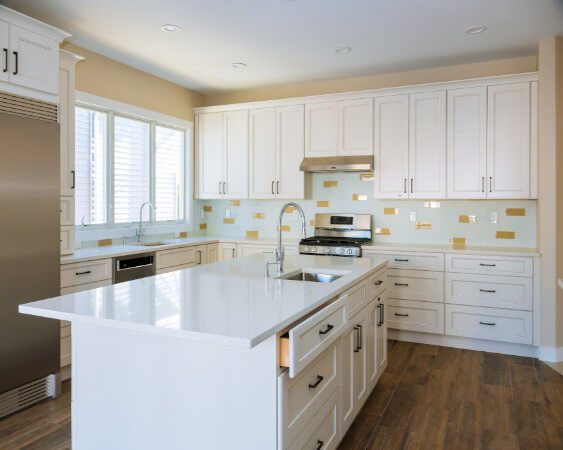
The post Natural Warmth appeared first on Kitchen & Bath Design News.
Did you miss our previous article…
https://www.thekawaiikitchen.com/?p=643
The Art of Japandi
Sometimes two great styles are better than one. That’s what happens when the raw functionality of Scandinavian design fuses with Japanese nature-suffused simplicity, and it’s a look that fits American kitchens like a glove. Designers say it creates wonderful zen, with some famous Scandi and Japanese variants adding warmth and interest to sleek minimalism.
At first glance it may seem an unlikely design union, since Japan and Scandinavia are on opposite sides of the globe. But, in actuality, their design sensibilities are remarkably similar, and Denmark, especially, has had a close trade relationship with Japan for hundreds of years. The Danish design museum in Copenhagen even devotes exhibit space to Japanese design.
Thomas Lykke of OEO Studio in Copenhagen, Tokyo and Kyoto applauds the design fusion of the two countries, but dislikes that it’s dubbed a trend.
“Trends tend to pass by,” he says. “The Japanese-Danish connection goes far beyond that. I call it shared DNA. Meticulous craftsmanship and attention to details, simplicity and timelessness are deep-rooted in both countries’ culture. We want design that will be relevant 50 years from now. And we are, in our hectic lives, looking for meaningful ways to live, through craftsmanship and rituals, whether that’s a tea ceremony in Kyoto or a coffee break in Copenhagen. Also, neither country has vast natural resources, so we respect what we have and work with it.”
Although Japandi at its roots is the epitome of minimalism, two special concepts set it apart. One is “hygge,” a Danish word now known by designers everywhere, meaning cozy comfort. In Scandinavia this is achieved with lots of textures and touches of color. The other is wabi sabi, the Japanese concept of finding beauty in something imperfect. This could be a well-loved heirloom, perhaps a piece of furniture or a well-used utensil. Although Scandinavians don’t talk about wabi sabi, they, too, love to let the patina of something old and well-loved add charm to a space.
Cabinetry in a Lykke kitchen is always the main event. In one kitchen, for example, cabinets aspire to be more a piece of furniture that fits naturally into living environments rather than a stand-alone kitchen. It combines simplicity and refined, contrasting materials. Lykke calls it “a quality culinary space rather than merely a show kitchen.” Another kitchen features modular cabinets, a popular concept in European homes. The modules are sectioned using slender metal dividers and sit on metal plinths creating a light, floating look.
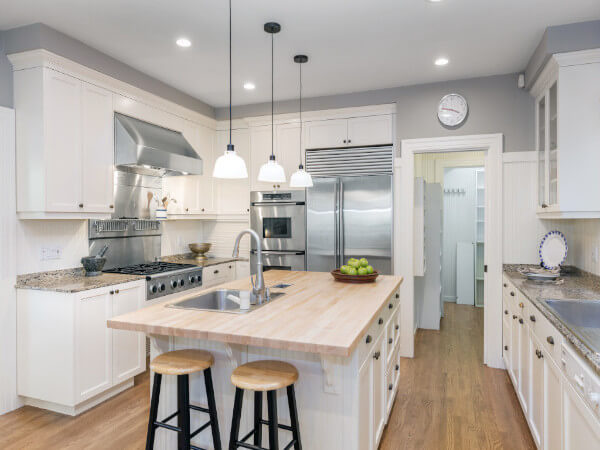
A tiny concrete cave of a New York City apartment is turned into a work of art by architect Andrew Mikhael, who used walnut not just for cabinetry but also for structural elements. The concrete ceiling couldn’t accommodate recessed lighting, so he installed LED tape lights in channels and then surrounded them with walnut slats. The angled walnut wall was designed to reference a drawn-back curtain revealing the sculptural space.
Modern Nostalgia
When a 30-something guy bought a tiny, concrete cell of an apartment on New York City’s Upper East Side, he turned to architect Andrew Mikhael for help. The client showed Mikhael photos from his grandmother’s home, a place that inspired wonderful memories. When Mikhael saw the grandmother’s Danish serve ware and the simple, elegant mid-century furnishings, he knew exactly what to do.
“Since he loves to have people over and cook and bake for them, I knew the kitchen should be an unexpected centerpiece,” reports Mikhael, “a functional work of art. We removed the wall between the galley kitchen and the living room to combine the spaces. We also extended the kitchen into the entryway space, thus expanding the kitchen from 56 square feet to 87 square feet. Next, we installed an angled walnut wall that recalls a partially pulled-back curtain, dramatically revealing the sculptural kitchen.”
Mikhael used walnut throughout the kitchen as an homage to the client’s grandmother. He even wrapped a structural column that couldn’t be moved in walnut. The remarkable workmanship morphs and blends, wraps and anchors, and ultimately hammers out a rhythm.
Lighting was a problem in the apartment. “Because the ceilings were concrete, lighting couldn’t be recessed into them,” explains Mikhael. “As a result, LED tape lights were mounted in long channels one inch below the ceiling, and we then used wood slats to give them a home. The slats don’t just shield the lighting channels, they also hide the unsightly concrete.”
Cabinetry is frameless with simple finger pulls to keep the look minimalist, countertops are matte black Corian, the range and hood are wrapped in stainless steel, and backsplashes are backlit glass.
Mikhael warns that a meticulous carpenter is needed for this kind of work. “I asked my contractor if he minded if I worked with the carpenters at Conex Interiors directly,” he relays, “and he gave me his blessing. They did an incredible job.”
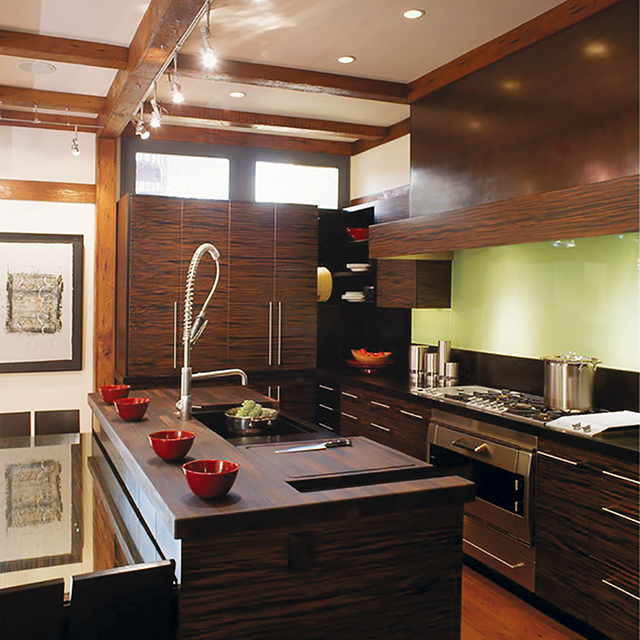
Designer Jennifer Gilmer proves that Japandi minimalism can be elegant and timeless, designing this kitchen with cabinetry crafted from Macassar Ebony, an engineered veneer.
Photos: OEO Studio
Japandi Meets Bungalow
Jennifer Gilmer, an award-winning kitchen and bath designer and principal of Jennifer Gilmer Kitchen & Bath with showrooms in Maryland and Virginia, says that she tells clients, jokingly, that she designs “Western Feng Shui” kitchens. “But I am really quite serious,” she remarks. “The more I learned about Feng Shui, the more I realized that I was unwittingly doing just that. It has become my signature style. So no matter what the design is, and they are all very different, the one thing they have in common is that they make you feel good. That’s Feng Shui.”
Japandi fans will testify to its built-in Feng Shui, so it’s no surprise that Gilmer chose modern Japanese design as the look she wanted for her own home. “This was a Sears bungalow,” she tells. “It was a far cry from the elegant minimalism of Japanese design, but my architect magically made my aspirations possible with a modern addition at the back of the house. There, I got the beautiful and functional space I had visualized for cooking, family life and entertaining.”
Knowing that the cabinetry would be the main focus of the kitchen, Gilmer sought out Premier Custom-Built Cabinetry, which has developed its Mizuki style inspired by Japanese folk houses and traditional Tansu cabinetry.
“We chose an engineered veneer crafted to look like Macassar Ebony,” relays Gilmer. “The wood grain is horizontal, and the ‘striped’ look is so striking that everything else in the kitchen was chosen to complement the cabinetry. No other element was allowed to distract from its beauty. For example, honed black granite was used for the countertops and wenge for the island wood detail. Wenge is similar to cherry, but turns dark over time. The backsplash behind the cooktop is backpainted glass, the farmhouse sink sits on black granite to protect the cabinets from water damage, and dishes are kept on floating shelves.”
She’s especially fond of the pantry, with its retractable bi-fold doors. They open to reveal a countertop, and it houses a steam oven as well as a plethora of cooking accessories. When not in use, the doors are shut so the pantry looks beautiful when entering the kitchen.
The gnarly irregularity of the unclaimed wood floors and beams contrasts with the clean, sleek cabinets, creating precisely the kind of juxtaposition that’s quintessentially Japanese. “So, yes, modern Japanese design and American Bungalow can mix well,” concludes Gilmer. “This space will never go out of style because it honored and melded two very tasteful styles that have proven the test of time.”
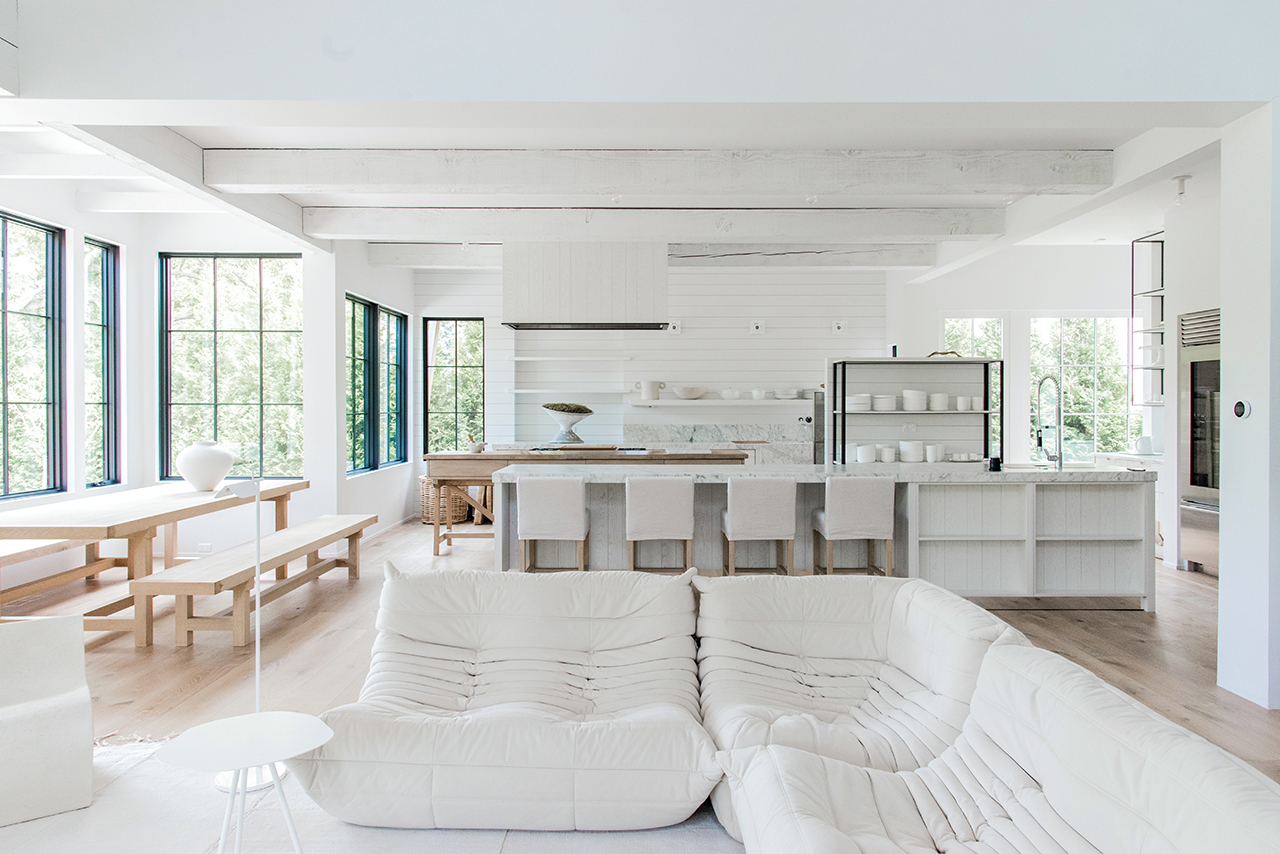
Neutral colors but strong texture contrasts of this Winnetka, IL open kitchen/family room/ dining area by Mick De Giulio reflect the design aesthetics of both Scandinavia and Japan.
Photo: Belen Aquino
Detailed Minimalism
Mick De Giulio, principal of de Giulio Kitchen Design in Chicago, IL, pays visits to near and far locales, and those influences have a way of creeping into his kitchen designs. Japanese and Scandi aesthetics may appear in a design here and there, but in typical De Giulio fashion, inspirations remain just that. From there they are carefully curated and translated into one-of-a-kind designs.
Such is the case of a kitchen he designed in Boston – a classic 19th-century Victorian with a modern addition in the back. “It was just right for a family friendly kitchen,” notes De Giulio. “It’s a contemporary, clean-lined space, but it blends seamlessly with the old part of the house, he remarks. “The design emphasizes asymmetry and horizontals, and the layout is straightforward. Materials play an important role in keeping the space serene. We used light walnut in an organic, almost natural color that we nicknamed ‘Norwegian’ for its sun-bleached, Scandinavian look.”
Of course, everything that De Giulio designs is actually not that simple. A kitchen may look minimalistic, but it’s sure to include exquisite details that don’t shout. The Boston kitchen’s cabinetry, for example, is framed in bronze and contrasts subtly with brushed Iceberg quartzite. The edges of the quartzite counter were mitered to make the slab look extra thick, and a stair-step design at one end provides room for extra seating. The quartzite is repeated on the backsplashes and wrapped the range area.
In another kitchen in Winnetka, IL, De Giulio, worked the wood, creating cabinets with seemingly unfinished, textured surfaces. The space was a riff on a style that the client called Belgian farmhouse, but it is also a look that’s beloved in Scandinavian and Japanese farmhouses. De Giulio achieved it using white oak, cross-cut against the grain. To emphasize the casual, freewheeling look of the light-filled space, he installed legs on the island and placed the cooktop on a table made of reclaimed wood. Finally, he introduced some freestanding stainless steel cabinets for a bit of an industrial vibe.
“There’s nothing sleek about this space,” comments De Giulio. “It is full of textures and juxtapositions. Nobody ever heard of Japandi when this kitchen was designed, but I think it plays into the style. It’s a strong style, especially because it is so adaptable.”
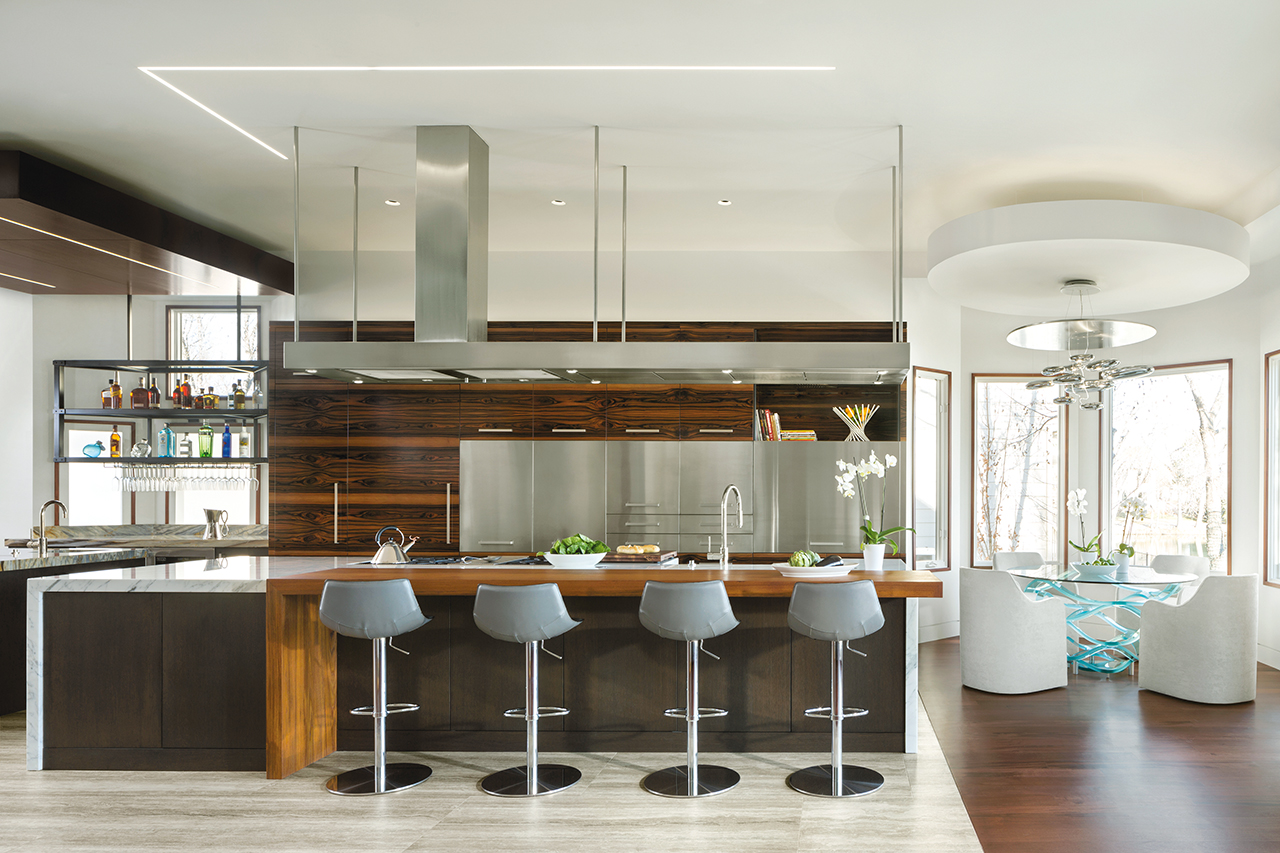
Marcus Otten calls the Royal Ebony veneer used for the cabinets in this kitchen the most beautiful he has ever seen, with unique colors and patterns that dictate that the cabinetry should be the key element.
Photos: Kimberly Gavin
Globetrotting Style
How do a couple of world travelers get a kitchen that reflects their global style, works as a canvas for treasures from many countries and yet functions for everyday life? They get together with award-winning designer Marcus Otten of Exquisite Kitchen Design in Denver, CO. Otten is known for a singular motto: “There are 10,000 different ways to do things, but only one way to do it right.”
For the world travelers, he designed a space where everything tells a story and brings up memories. The couple’s objets d’art are displayed throughout the space, including on floating shelves. The most stunning element, however, is the cabinetry featuring Royal Ebony veneer.
“It’s the most beautiful material I have ever seen,” remarks Otten. “It features unique color patterns and is very rare. There simply are no more logs. This African tree grows slowly and can only be turned into lumber when it’s 100 or so years old.”
Rift-cut oak for other cabinets and the island plus steel accents provide the layers and textures that Otten favors. Altogether, the space contains a lot of the Japandi influence: meticulous craftsmanship, beautiful wood, thoughtful contrasts and artistic accents.
Japandi’s elements are expected to continue to resonate with designers, who find its sophisticated minimalism warmed by craftsmanship and artistry endlessly adaptable. Many homeowners also understand and embrace the concepts of hygge and wabi-sabi, which Japandi fans call “yin and yang” at its best. Gilmer’s reference to it as “great Feng Shui” reflects its staying power in design. 
The post The Art of Japandi appeared first on Kitchen & Bath Design News.
Thermador Cites Student Design Winners
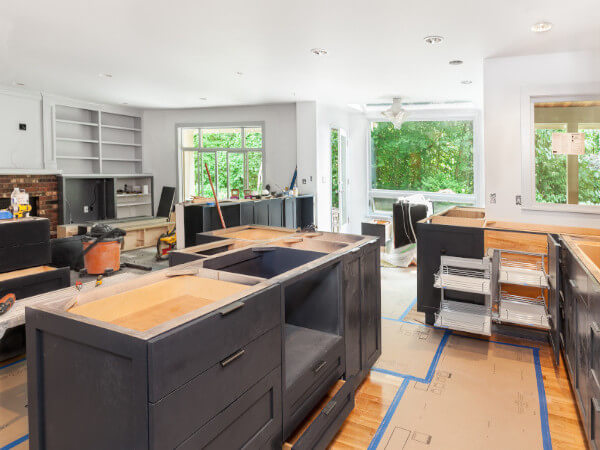
IRVINE, CA — Thermador, the Irvine, CA-based luxury home appliance brand, has announced the inaugural student recipients of the company’s “Diversity in Design Pipeline” initiative, launched this year to empower a new generation of talent from underrepresented communities.
The Thermador Diversity in Design Pipeline Initiative, created in partnership with the Interior Design Society, was designed to support students in their senior year at an accredited interior design program to aid the transition into a successful, burgeoning career. The program was informed by a survey commissioned by Thermador that found mentorship and financial support to be the greatest obstacles for students of under-represented backgrounds to become professional designers.
The winning students include Aleah Mazyck of UNC Greensboro, Kayla Martin of California State University, Raquel Rodrigues of Texas Tech University, Jonathan Martin of the University of Northern Iowa and Chrystal McLeod of Georgia Southern University.
“Thermador is honored at the opportunity to work with these talented students as part of our brand’s commitment to opening more pathways for underrepresented communities in interior design,” said Beatriz Sandoval, head of brand marketing for Thermador.
The mentorship program pairs students and mentors who will meet monthly to discuss the essential and tangible skills needed to be successful in the world of design. Students also receive $10,000 toward tuition and a student membership with IDS, Thermador said.
The post Thermador Cites Student Design Winners appeared first on Kitchen & Bath Design News.
Did you miss our previous article…
https://www.thekawaiikitchen.com/?p=616
Millennials’ Impact Seen Gaining for Kitchen & Bath Designs
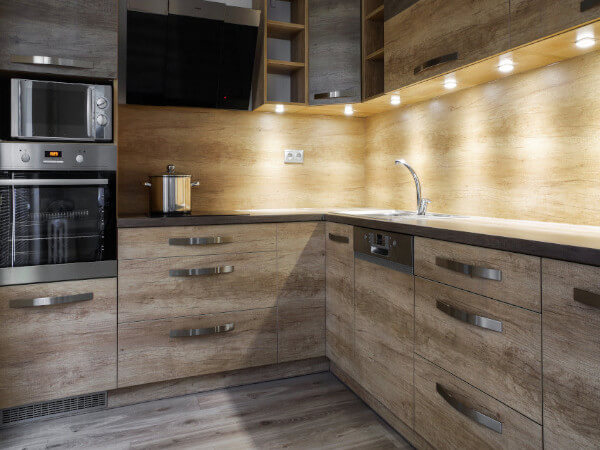
HACKETTSTOWN, NJ — Millennial clients – particularly those with children – are increasing in influence while the impact of Baby Boomer clients is gradually declining and Gen X is remaining constant, according to a 2022 Design Trends Forecast released this week by the National Kitchen & Bath Association.
The NKBA’s annual design trends forecast points to a gradual, yet palpable, shift in the primary customer base for new and remodeled kitchens and baths, after several decades in which the market was driven largely by a huge cohort of Baby Boomers (aged 57-75) and Gen Xers (aged 41-56) consumers.
While baby boom and Gen-X consumers remain the industry’s predominant buying force, the steady increase in business from Millennial clients (ages 25-40) is increasingly impacting both market share and anticipated kitchen and bath design trends, according to the NKBA, which said Millennials’ impact has “a high probability of increasing in the future.”
“Those working with Millennials see slightly less-expensive projects, but that’s likely driven by Millennials’ lower disposable income during their current life stage,” said the NKBA, whose 2022 Design Trends Forecast was based on a survey of approximately 650 designers, dealers, and other design professionals. The survey’s aim was to identify styles, features and materials that are expected to be more popular in the next several years; to identify the products that have the most dramatic impact on today’s kitchens and bathrooms; to assess if there are notable variations in designer client base profiles; and to predict if client base profiles are predictors of perceived design trends.
Among the overarching themes emerging from the NKBA’s 2022 survey is that kitchen clients generally want flex space for work, touchless fixtures, easy-to-clean surfaces, outdoor living areas, LED lighting and recycling storage. There is also a concerted desire for mobile-friendly spaces, healthy cooking, app-controlled appliances and voice-activated lighting, the NKBA said.
In the bathroom, consumers want a large shower, and are likely to remove tubs in order to allocate more space or access to storage/dressing areas, the NKBA said. There is also a pronounced need for energy and water efficiency, connected products such as water temperature controls, entertainment and communication, the association added.
In general, new kitchen and bathroom design is emerging from nature-inspired themes, the NKBA reported. “Organic, natural styles are prominent in both kitchens and bathrooms, especially among Millennials, (and) increased natural light with large, high-performance windows and doors for outdoor access will be prominent,” the NKBA said.
“Homeowners have a desire for spaces that can multi-function,” the NKBA observed, pointing to a growing trend toward large islands for food prep that also function as dining tables, homework and work from home; flexible space for home office activities; pantries that include space for storage and a working area for small appliances; and workstation sinks with built-in features (drying racks, cutting boards, etc.) In addition, bathrooms that connect to dressing areas and/or laundry facilities, and vanities and medicine cabinets with outlets are also experiencing increased popularity.
When designing new spaces, homeowners are generally thinking about the following:
n Cleanliness: easy-to-clean surfaces and countertops that are sanitary and non-porous. The current strong demand for quartz is expected to continue, as is the popularity of larger-format tile or slabs with less grout, and touchless faucets.
n Sustainable design: 100% LED lighting; a dedicated recycling area; low-E windows and doors; Energy star/efficient products; EPA WaterSense fixtures; VOC-free paint; products with recycled materials, and radiant flooring.
n Universal design: spaces that will allow for aging in place; curb-less showers; fewer free-standing tubs, grab bars, seats in showers and hand-held showerheads.
Although homeowners are excited about integrated technology, it is not being utilized in most projects. Specifically, only 30% and 21% of kitchen and bath projects, respectively, include integrated technology features, the NKBA reported.
“Designers have new ways to interact with their clients, especially Millennials,” the NKBA said. “Future design projects will include a mix of in-person and virtual meetings. In-person meetings both in designer’s offices and at the client’s home will be most prominent.
“Designers will (also) take advantage of virtual channels with video calls and video meetings with clients,” NKBA researchers added. “Millennials are more open to virtual meetings while Boomers are looking for regular onsite meetings at their home.”
The post Millennials’ Impact Seen Gaining for Kitchen & Bath Designs appeared first on Kitchen & Bath Design News.
Did you miss our previous article…
https://www.thekawaiikitchen.com/?p=580
Ceramics of Italy Tile Competition Open for Entries
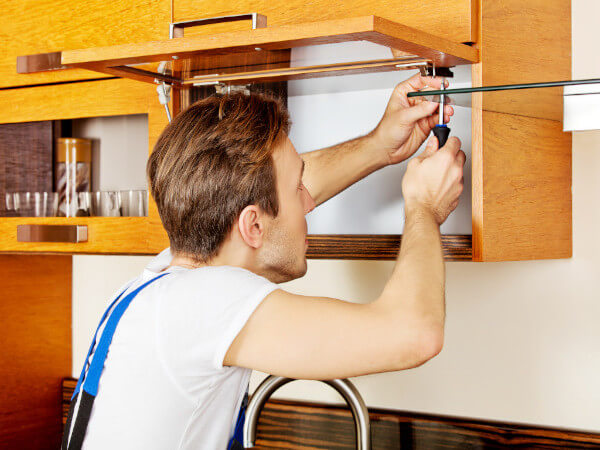
NEW YORK — Confindustria Ceramica (the Italian Association of Ceramics) and the Italian Trade Agency have announced that the 2022 Ceramics of Italy Tile Competition is open for entries.
The annual awards program celebrates the exceptional work of top North American architects, designers, and students who use Italian ceramic and porcelain tile in their projects “to create innovative solutions that demonstrate an understanding of the material’s practical, aesthetic, and sustainable benefits,” competition sponsors said.
An international jury of design experts will select winners and honorable mentions in four built project categories, including new construction and residential, as well as a winner in the student category. Architects and designers based in the U.S. or Canada and students currently enrolled in a North American college or university are invited to submit their work through January 7, 2022.
Winners and honorable mentions will be notified in February and announced during the next edition of Coverings, the largest international tile and stone exhibition in North America, scheduled to take place in Las Vegas April 5-8, 2022. Winners will be invited to attend the show and present their projects in front of an audience of design and trade media, manufacturers, and tile industry professionals, sponsors said, In addition to a cash prize of $1,500, the four built project category winners will receive a five-day CEU trip to attend Cersaie, the world’s largest exhibition of ceramic tile and bathroom furnishings, set for Sept. 26-30, 2022 in Bologna, Italy.
Competition guidelines, submission forms and additional information can be found on the Ceramics of Italy Tile Competition website, www.tilecompetition.com.
The post Ceramics of Italy Tile Competition Open for Entries appeared first on Kitchen & Bath Design News.
Did you miss our previous article…
https://www.thekawaiikitchen.com/?p=577
Cabinetry for the ‘Win’
Creating highly functional and aesthetically pleasing spaces is contingent on much more than design alone. Designers know that finding just the right products for their clients is equally as critical and helps set the stage for ultimate success.
Often, they discover some of those products – like the perfect cabinetry, countertop, appliance or fixture that makes a kitchen or bathroom go from ho-hum to spectacular – within the pages of Kitchen & Bath Design News or on KitchenBathDesign.com.
At the end of each year, KBDN compiles a list of the Top 20 products that designers found most interesting, as identified through reader feedback.
This year’s list shines a spotlight on cabinetry and the significant role it plays in a kitchen or bathroom space. As evidence, the top four spots are either cabinets or related accessories. An additional seven spots within the Top 20 are represented by countertops, hardware and cabinetry configuration and organization.
While cabinetry dominates this year’s list, there are plenty of other products designers inquired about throughout the year. To find out what other products made the 2021 Most-Asked-About Product list, peruse the following pages and visit KitchenBathDesign.com. 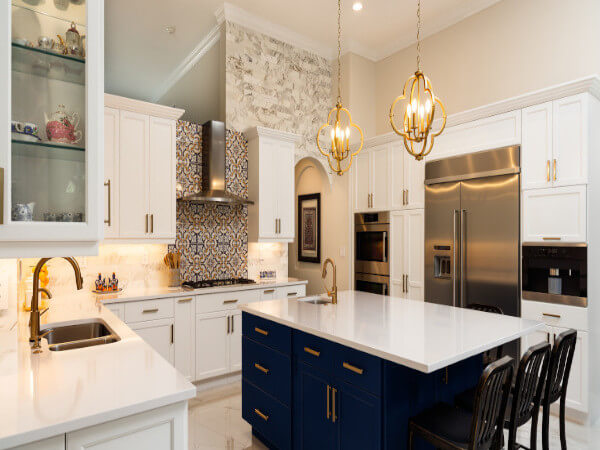
1. Slim Shaker
Over the years, kitchen and bath design has seen a change from traditionally decorative door styles to a simple shaker look that has now become the standard in home fashion, relates Lisa Myers, head of the Showplace Cabinetry Product Development team.
The Showplace Cabinetry Shaker door styles have been popular for many years, and the showcased slimmer version gives a modern spin to the shaker family with its timeless look and feel.
“The Showplace Duet Slim Shaker option is very appealing, with its simple clean lines and ability to adapt to any design style within a home,” says Myers. “When paired with one of the many paint options we have available, the Duet Slim Shaker door looks stunning, displaying a distinct character within the simplicity of the door’s slim design.”
The simple Duet Slim Shaker style is available in the overlay, inset and frameless Showplace Cabinetry lines, delivering a modern feel to any living space.
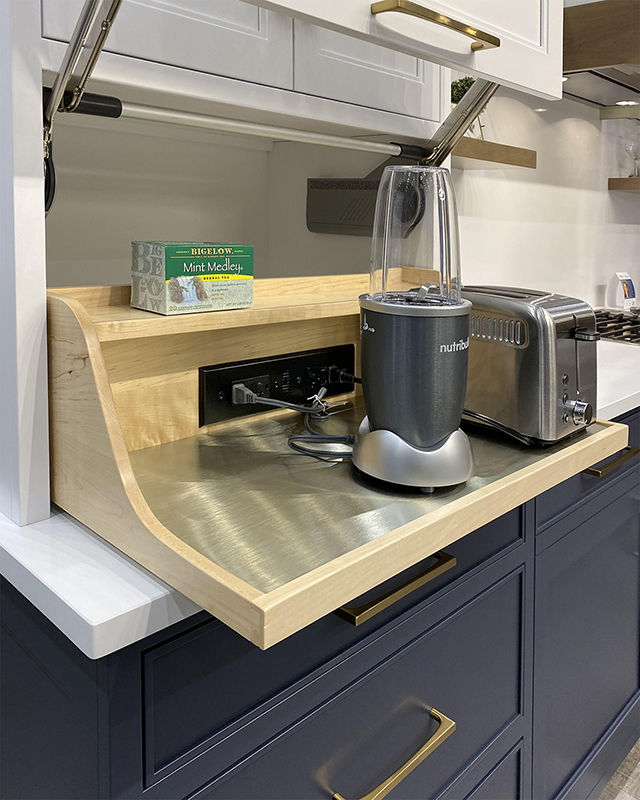 2. Clutter-free Surfaces
2. Clutter-free Surfaces
The ever-growing number of personal tech and small appliances, countertop cords and device clutter are at an all-time high, indicates Paul Hostelley, director of business development for Docking Drawer. As a result, incorporating features such as the Style Drawer Appliance Garage and Docking Drawer outlets inside kitchen cabinet drawers have become mainstream features that are essential to creating organized, functional and clutter-free surfaces.
Small kitchen appliances can be safely powered and accessed via the Style Drawer Appliance Garage while remaining plugged in. The outlet cutout is already prepared on the back of the pullout for easy installation of the Style Drawer Blade or Blade Duo powering outlet.
“Striking the perfect balance between aesthetics and functionality, powered appliance garage pullouts offer the ability to keep blenders, toasters, coffee makers and other small appliances connected and ready while otherwise stowed neatly out of sight,” says Hostelley.
As well, Docking Drawer in-drawer outlets are simple to install into new or existing cabinets. While commonly found throughout the home in bathrooms, nightstands and countless other residential and commercial spaces, they can be “especially practical in the kitchen, which is often the primary gathering area and where countertop space is of the utmost value,” says Sarah Robertson, founder/principal of Studio Dearborn and Docking Drawer brand ambassador.
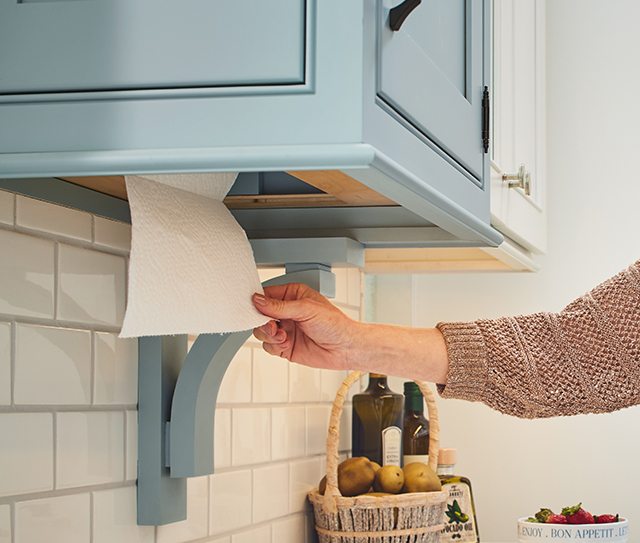 3. Integrated Paper Towel Holder
3. Integrated Paper Towel Holder
Now, more than ever, cleanliness is of utmost importance, says Angela O’Neill, director of marketing for Wellborn Cabinet.
In response, the company offers its You Draw It paper towel holder. Integrated into the bottom of upper wall cabinetry, paper towels are kept off the countertop and protected against countertop spills. Plus, they are kept out of sight by placing them within the cabinetry.
“This design maximizes the utility of the cabinetry by maintaining the protection for your paper goods against countertop spills, and it doesn’t remove storage capacity,” she explains. “Typically, homeowners choose to position this particular feature near the sink or microwave to ensure convenience. Because the towels are enclosed inside the cabinet, they are kept away from bacteria and other contaminants for a safer and cleaner environment.”
Crafted from products made in America, both the paper towel holder and cabinet provide durability for long-term usage. This and other cabinet accessories from Wellborn Cabinet are available in a multitude of materials and finishes.
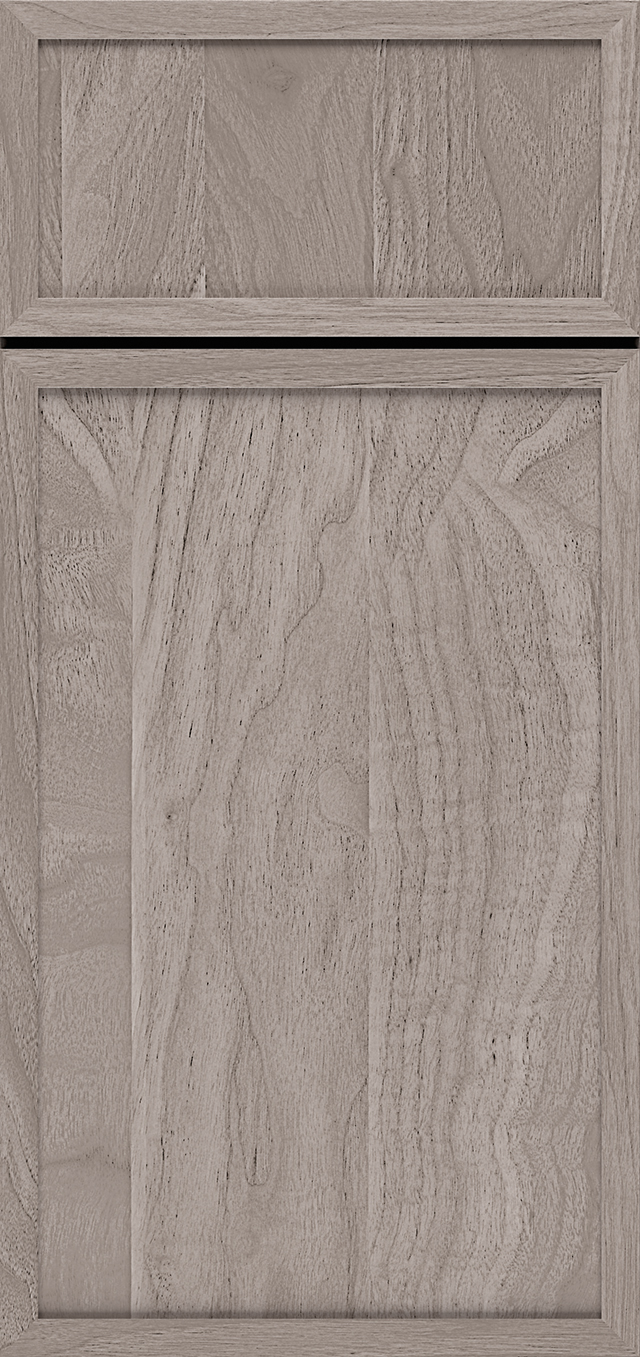 4. Purposeful Cabinets
4. Purposeful Cabinets
As people spend more time inside, they are gravitating toward cabinets designed with purpose, style and overall function in mind, notes Stephanie Pierce, director of design and trends at MasterBrand Cabinets.
For example, Pierce says, “The company’s Omega Cabinetry contemporary collection not only looks beautiful, but it also accommodates the need for more storage, multi-purpose functionality and better organization for easy living. Embodying clean lines and subtle design, Omega contemporary cabinetry harmoniously elevates any space and can be modified for any lifestyle.”
With nearly 80 cabinet door styles to choose from and numerous wood type, finish, laminate and color options, the Omega collection of contemporary products truly provides a perfect fit for every taste, according to the company.
The company recently added three stunning door styles – Jax, Kali and Kadey – to the line, with streamlined profiles and a minimal aesthetic. Modern meets minimalistic in the Jax door style, where slab and shaker styling merge beautifully in a sleek slim-line shaker profile. The Kali and Kadey epitomize a classic but modern feel with shallow center panels.
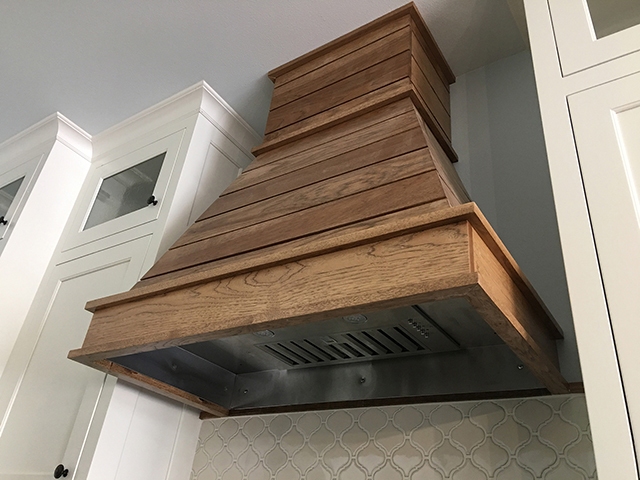 5. Shaker-style Hood
5. Shaker-style Hood
The move toward simplistic, shaker-style painted cabinets has also led to increased interest in Castlewood’s Shiplap-style Range hoods, states Pete Larson, national sales manager for Castlewood.
“Homeowners are wanting a design element that will add some unique characteristic to make their kitchen stand out,” he explains. “The Shiplap style provides designers with the opportunity to add spice to the plain, shaker-style kitchen.”
Castlewood by AMS offers Shiplap range hoods in Chimney and Box configurations, which are designed to accommodate the Ascension line of kitchen ventilation products. They can be built from select molded hardwoods or rustic weathered planks, with each offering its own distinguishing quality.
Currently, the Chimney-style Shiplap range hood is the most popular, Larson adds, noting that this style needs extra space between wall cabinets to really stand out. In remodeling applications where there is not enough space between the wall cabinets, a Box-style Shiplap range hood is more suitable, he notes.
“The box-style Shiplap range hood can fit tightly between adjacent cabinets and still offer the individual client a distinctive and appealing design option,” he says. “We see this trend continuing and we intend on broadening our offering with other components that will complement this style.”
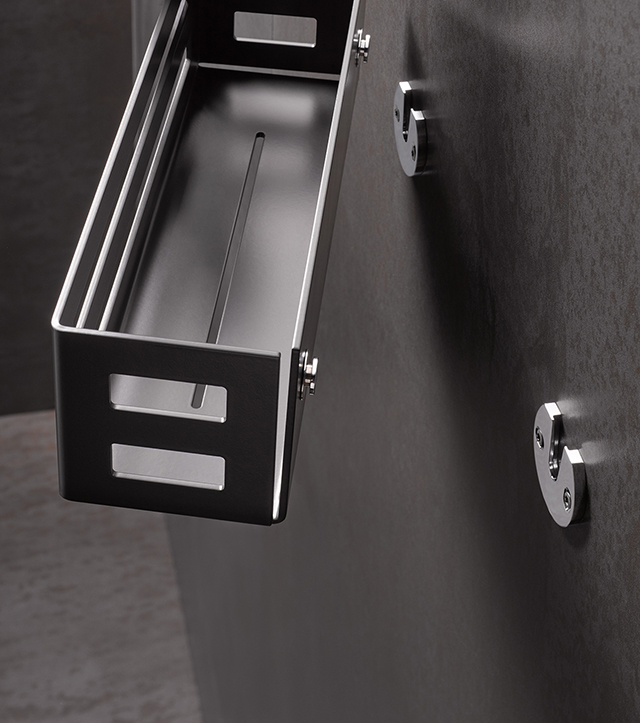
6. Shower Organizer
Staying organized is critical for all rooms of the home, including the bathroom. Keuco accommodates the need for storage in the shower/bath area by offerings its Shower Shelf. Made from sturdy, eco-friendly aluminum material with a black or white powder-coated finish, the Shower Shelf helps maintain a tidy, organized shower by holding shampoo, conditioner, body washes and other items.
Removable for easy cleaning, the shelf is available in a closed-front design to hide items or a semi-open front to see what is behind. It offers customizable widths in ½” increments. It can be hung in either glued or screwed wall brackets.
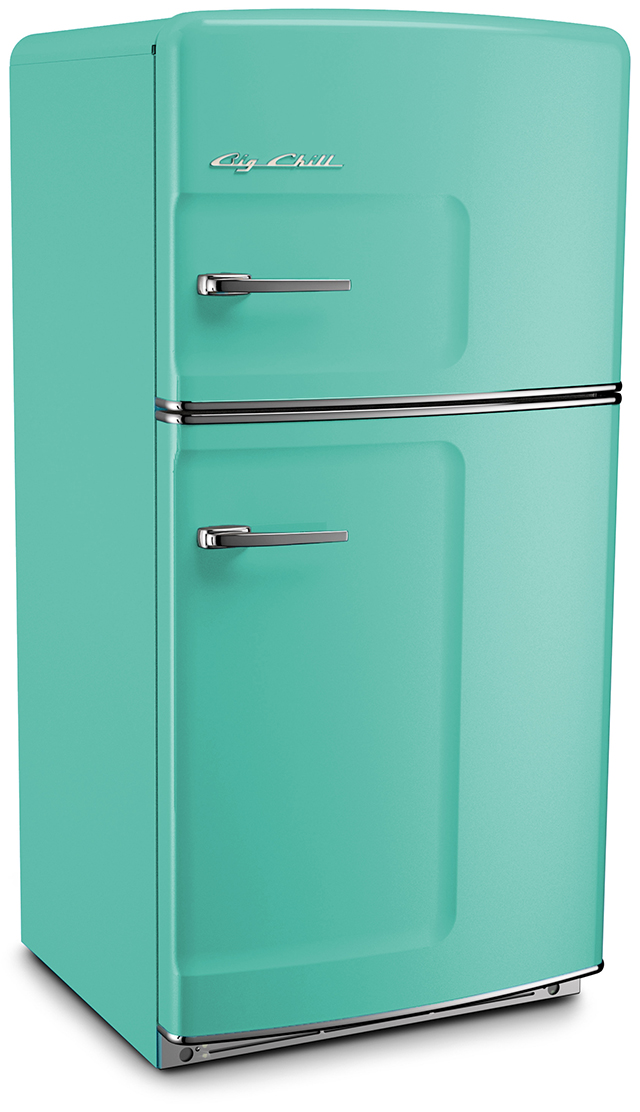 7. Retro Appliances
7. Retro Appliances
According to Hillary Frei, president of Big Chill, a popular trend in interior design currently is mixing styles and pulling in elements of different decades.
“It creates a unique, personalized look,” she states. “I think that’s what makes our Retro line and the Original Fridge so popular. People want a seamless blend of old and new, and that’s exactly what this product line is designed to do.”
The company added Turquoise its line of finishes for the iconic Retro Fridge. It pays tribute to the 1950s, when the hue was widely used in Mid-Century kitchens and in fashion.
“In terms of the color, the pandemic has pushed us to incorporate more vibrant colors into our personal styles, and the Turquoise color is the perfect soft blue/green to add that pop,” she continues. “It’s reminiscent of the 1950’s Robin Egg Blue we all recognize as iconic for the decade, and with retro styles coming back in all departments, it’s a great addition to the modern all-white kitchens.”
Turquoise joins the other colors in the line – White, Black, Cherry Red, Beach Blue, Orange, Jadite Green, Buttercup Yellow and Pink Lemonade. More than 200 custom colors are also available.
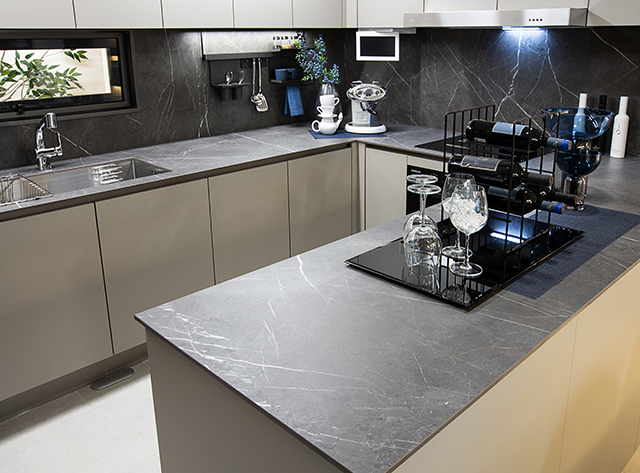 8. Look-alike Sintered Stone
8. Look-alike Sintered Stone
The range of surface options from LOTTE Chemical Corporation includes its Locelain sintered stone collection.
Available in an extensive range of nine bold to subtle colors – including those that resemble natural stone and concrete as well as a solid selection – the ultra-compact durable surfaces come in multiple sizes, including large-format sheets in polished, satin and matte finishes.
Resistant to UV rays, extreme temperatures, scratches and stains, the line performs in interior and exterior applications, including as wall cladding, flooring and countertops in kitchen and bathroom projects or any high-traffic areas that require additional durability and functionality.
 9. Interior Design Software
9. Interior Design Software
Interior design software is an essential part of today’s design process, relates Santiago
Morales, 2020 Design Live product manager.
“Clients are becoming more and more involved with their remodeling projects, and they expect 3D visualizations and digital floor plans to help them better understand what their future space will look like,” says Morales. “An interior design software is also beneficial to the user’s bottom line because it helps improve accuracy, minimize errors and convey realistic estimates, all contributing to a happy customer.”
2020 Design Live is a kitchen and bathroom design software with built-in manufacturer catalogs, 3D rendering capabilities, an extensive library of decorative items, infinite customization options, advanced lighting functionality and so much more.
The latest software has features such as real-time collaboration between designers and clients, artistic effect options for renderings, and a multi-point feature that showcases different perspectives in a 360° panorama. 2020 Design Live is meant to simplify and streamline the design process so that users can focus on the creative, innovative and functional aspects of a project.
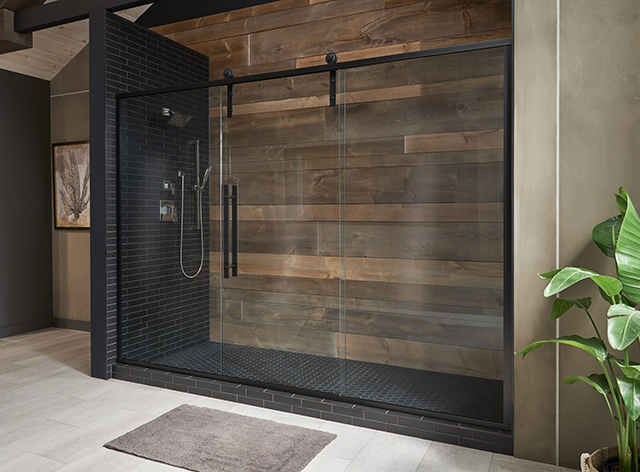 10. Sliding Barn Shower Doors
10. Sliding Barn Shower Doors
Barn doors have become a popular trend in interior design and, building upon that popularity, Coastal Shower Doors offers its Eclipse Series sleek, modern and adaptable shower door.
The Eclipse marries the function and style of the barn door with smooth gliding rollers, tempered glass and a seamless header, creating a contemporary piece that makes a statement in the bathroom.
The doors are available in a black finish, customizable glass styles, textures and hardware, anodized aluminum frames and stainless steel handles, brackets and fasteners.
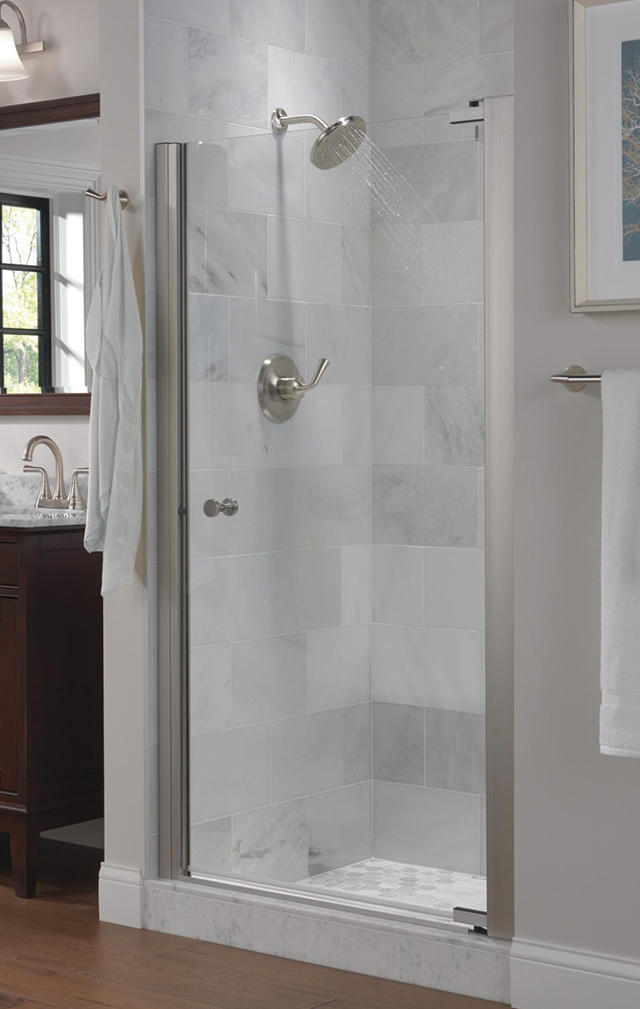 11. Distinctive Bath Fittings
11. Distinctive Bath Fittings
In keeping with homeowners’ desire to mix and match modern elements with traditional design, Delta Faucet Co. offers the Kayra Bath Collection. Its transitional style adds distinctive design to any bathroom. To further elevate a space, it offers functional features like a pull-down spray wand for easy cleaning, multi-setting H2Okinetic Technology and In2ition Two-in-One Shower options.
The Kayra Bath Collection is offered in Chrome, Brilliance Stainless and Matte Black finishes.
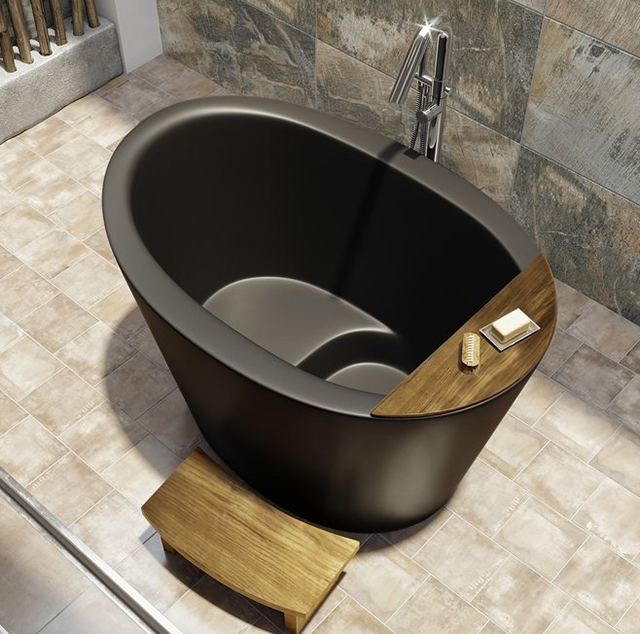 12. Heated Freestanding Tub
12. Heated Freestanding Tub
Aquatica’s True Ofuro Tranquility Heated Japanese freestanding bathtub is fashioned from the firm’s AquateX solid surface material, which makes it durable, eco-friendly and easily cleanable, notes the company. Its Tranquility heating system is fitted with a recirculation system to eliminate the hassle of adding hot water while maintaining a constant 104° F temperature.
Now available in black, the soaking tub allows for full body immersion and includes an integrated seat and backrest to ensure comfort and relaxation, notes the firm.
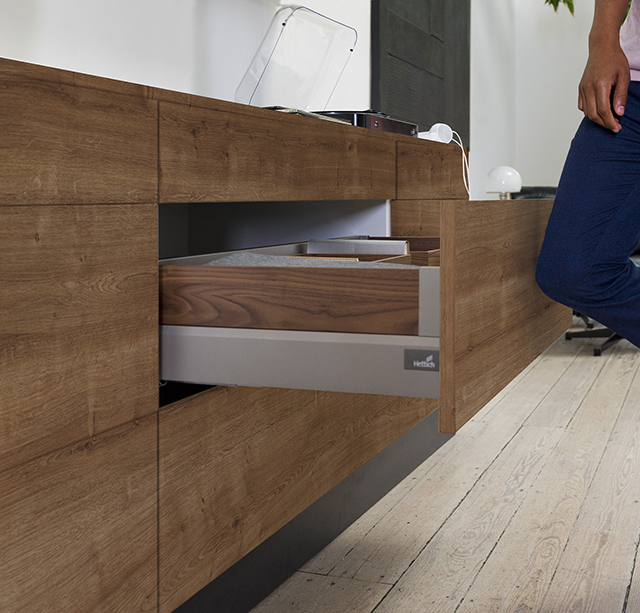 13. Push-to-Open Cabinet System
13. Push-to-Open Cabinet System
Hettich’s Push-to-Open Silent makes cabinetry effortlessly handleless by opening drawers mechanically in response to a light press on the front panel. On shutting, they close in a gently cushioned movement.
The system recognizes drawers closed by hand and does not reopen them accidentally. And, if there’s a lack of momentum on closing, a drawer energy storage system prevents the drawer from opening again and reduces the force needed to close it next time.
 14. Corner Drawers
14. Corner Drawers
Drawers are a great way to store and organize items. To maximize corner storage, WalzCraft offers its Inside Corner Drawer Boxes, which are designed to create easily accessible storage space in lieu of lazy susan cabinets. The addition of full-extension drawer glides allows access to stored items and eliminates kneeling to get to those hard-to-reach places.
The drawer boxes are made to order and are available with half-blind dovetail construction in solid wood and Baltic birch plywood.
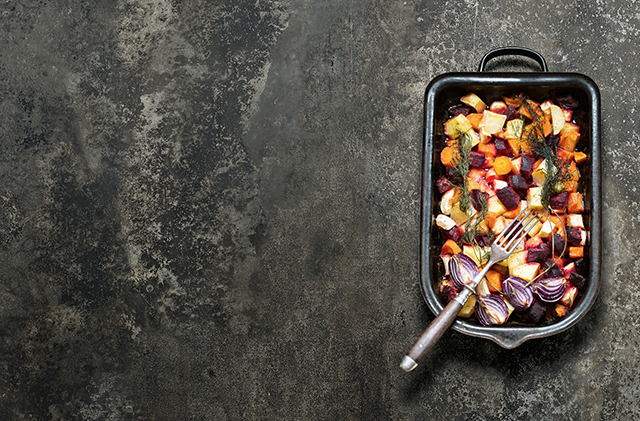 15. Natural Minerals Porcelain Surfacing
15. Natural Minerals Porcelain Surfacing
Corian Design showcases its new Corian Endura line, a porcelain made from 100% natural minerals that is resistant to extreme heat, UV light, abrasions, scratches and stains, according to the firm.
Endura is non-porous and Greenguard Gold Certified. It is available in four product families, including tones in monochromatic, marble, metal and cement, that match up with a wide selection of kitchen styles. As a complement, it is also offered in two finishes – Satin and Mineral.
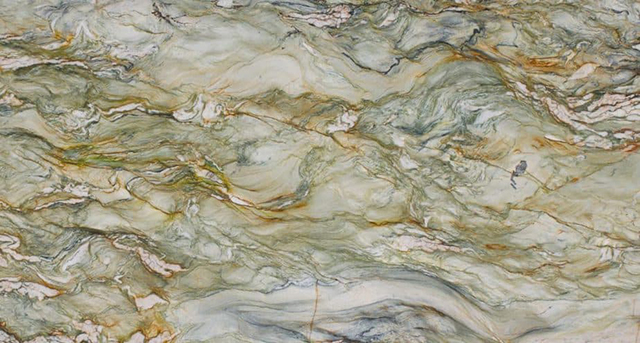 16. Quartzite Surfacing
16. Quartzite Surfacing
Antolini Luigi has added to its wide range of natural stones with Fusion Wow Quartzite, available in three styles: Fusion Wow Dark, Fusion Wow Light and Fusion Wow Multicolor. Fusion Wow | Original ‘Light’ quartzite is unique for its colors and striking veining, with shades of green that spread like gentle waves. The surfacing can be customized with any finish the company offers.
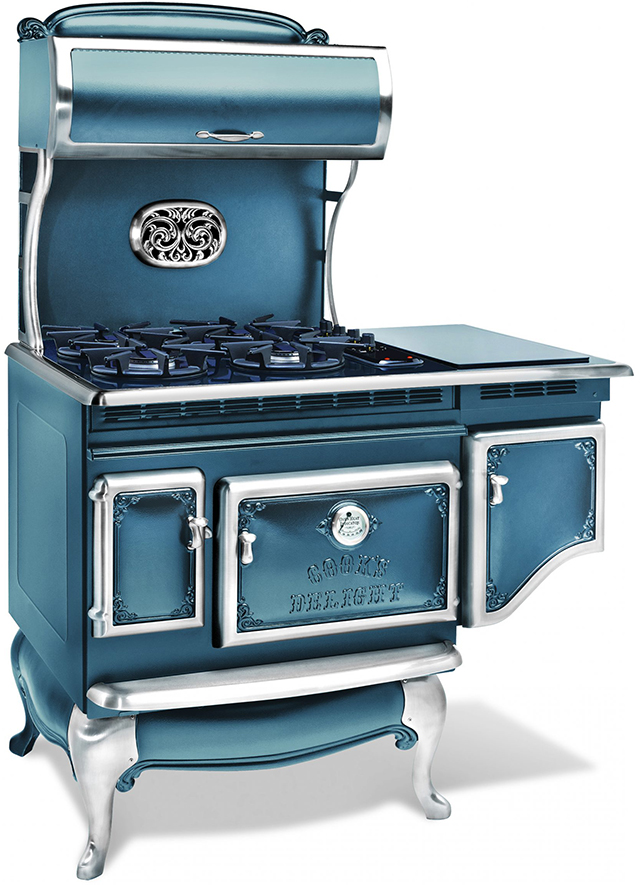 17. Custom Color Appliances
17. Custom Color Appliances
Elmira Stove Works offers custom color capabilities to its Antique line. The company’s antique appliances are now available in more than 1,200 custom colors, significantly expanding design options.
Inspired by 1850s-style appliances, Elmira’s Antique line includes a series of ranges, refrigerators, wall ovens, microwaves and dishwashers/dishwasher panels. Each appliance is custom crafted according to desired color, trim style and cooking features (for ranges) to suit personal preference and cooking style.
Elmira’s antique appliances can be ordered in approximately 200 colors from the RAL color code book and 1,040 hues from the Axalta SpectraMaster Solids Color Atlas. In addition, the company can color match to many colors.
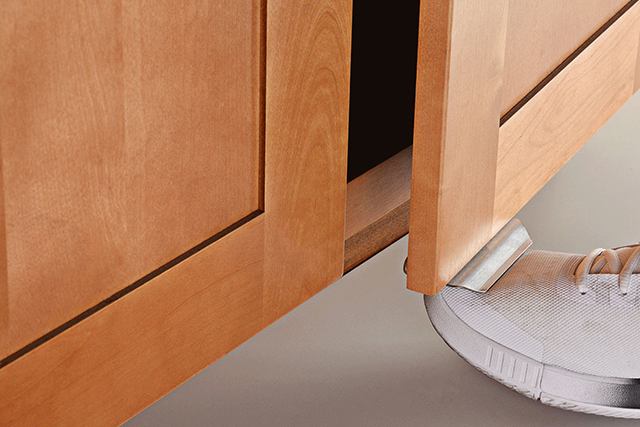 18. Hands-free Cabinet Pull
18. Hands-free Cabinet Pull
For a more hygienic approach to operating lower cabinet doors and drawers, Doug Mockett & Co. offers the foot pull, which operates cabinet doors and drawers by using the front of a shoe.
Delivering hands-free touchless operation, users can safely access storage areas without the fear of spreading or contracting germs. The lip on the front edge is softened with a subtle bend to prevent scratching on dress shoes – just slip the front of the shoe underneath and pull forward.
The foot pulls are available in Matte Black, Matte White, Metallic Silver and Satin Stainless Steel.
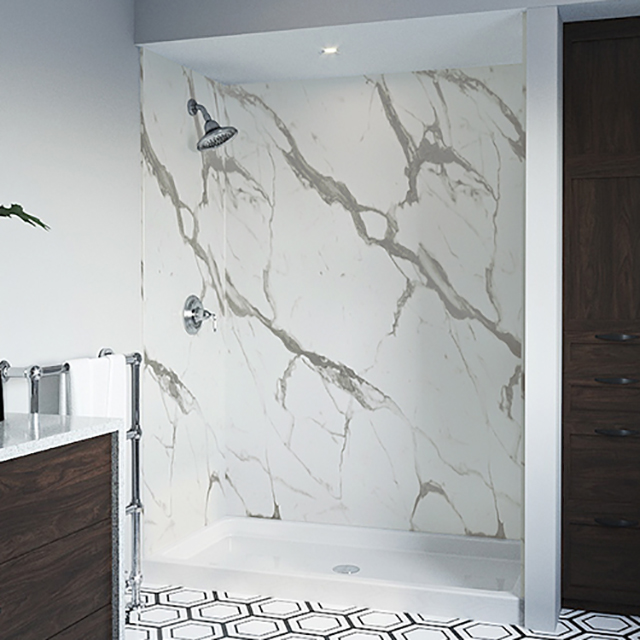 19. Shower Wall Panel System
19. Shower Wall Panel System
Wilsonart has introduced Wilsonart Home, a curation of the company’s most sought-after collections with surfaces that are versatile enough to be used anywhere – on countertops, cabinets, walls and more. The Wetwall Water-Proof Wall Panel System includes 15 waterproof, lightweight panels that work well for wet area applications, such as showers. The patented waterproof solution eliminates the need for grout or demolitions, since it can be installed directly over gypsum board, green board, fiberboard and existing tile.
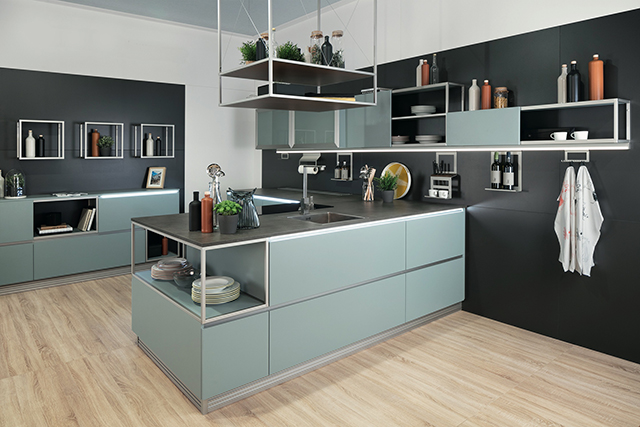 20. Smart Cube Storage
20. Smart Cube Storage
Häfele delivers modular display storage with its Smartcube Open Storage System. Smartcube can be as small as one shelf unit on a wall, or multiplied exponentially to fit any project, and can even be paired with casework, islands and other furniture. Projects can be customized by cutting horizontal runs to their preferred length and using shelving to match. Smartcube is offered in black and stainless steel look finishes.
The post Cabinetry for the ‘Win’ appeared first on Kitchen & Bath Design News.
Did you miss our previous article…
https://www.thekawaiikitchen.com/?p=540
Daltile Celebrates Austin Showroom Opening
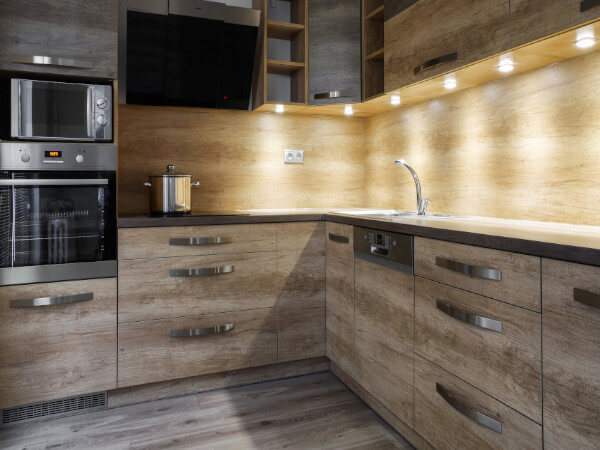
Dallas, TX – Daltile recently held the official grand opening event for its newest showroom, located in the South Lamar area of Austin, TX. The brand’s newest 4,000+-sq.-ft. showroom delivers easy access to the hottest tile products for Austin’s interior designers and architects, notes the firm.
“The design scene in Austin is really electric right now, with a lot of new build residential and commercial construction happening as well as a constant stream of remodels,” said Katy Ebbert, manager of Daltile’s new Austin showroom and licensed interior designer with 20+ years’ experience in commercial and residential interior design. “Austin itself is so exciting and that energy flows right into our city’s design scene. Austin is a melting pot of people and artistic ideas. There is a constant exchange with everyone bringing fun, unique ideas to the table when it comes to design.”
“The Austin design vibe is definitely unique,” said Brian Smith, senior marketing manager, Dal-Tile Corporation. “It’s kind of a funky, hippy, organic vibe. We nod to Austin’s personality with special features designed into our Austin studio location. As you enter our studio, you are greeted by a big tie-dyed tile wall, complete with the phrase, ‘Keep Design Weird’ in neon lights above the mosaic. Part of our studio is dedicated to outdoor design, where we prominently feature a favorite phrase of a well-known Austinite, ‘Alright, Alright, Alright.’ We have also transformed the front brick wall of our building outside into an impressive mural, designed and hand-painted by professional artist Daas. Daas took his original inspiration for the mural from Texas wildflowers and expressed this idea in a modern take that includes geometric tile shapes and perfectly reflects Austin’s unique flavor.”
“We have designed our new Austin showroom to focus on our high-end products and showcase these tiles in a unique way,” said Paij Thorn-Brooks, v.p. of marketing, Dal-Tile Corporation. “In addition to an easy-to-peruse showroom filled with product samples, our Austin studio features a generous number of vignettes throughout the showroom as well as story boards, flat lays, and generous slices of product. Accessing take-with product samples is very easy for the interior designers, architects and homeowners who are visiting our studio.”
“Daltile has also designed this studio to be an extension of our customers’ business,” advised Thorn-Brooks. “We encourage our local designer and architect customers to bring their own clients into our showroom. Not only do we put all of the hottest tile looks right at the professionals’ fingertips, making it easy to help their clients select just the right tile, but the stylish atmosphere of our studio, complete with work tables and conference rooms, provides such an inspirational ambience for a meeting. Although this particular studio focuses on showcasing Daltile’s high-end products, our entire product line is accessible to choose from during a visit to the Austin studio.”
The post Daltile Celebrates Austin Showroom Opening appeared first on Kitchen & Bath Design News.
Did you miss our previous article…
https://www.thekawaiikitchen.com/?p=534